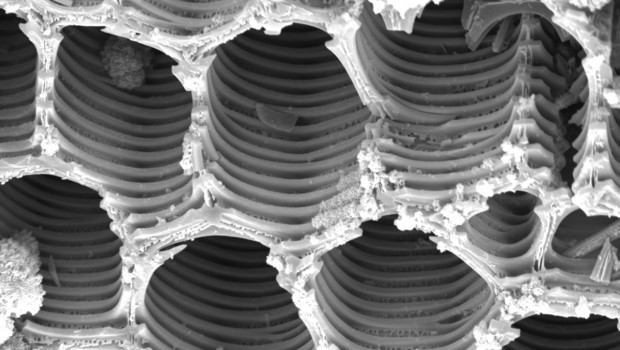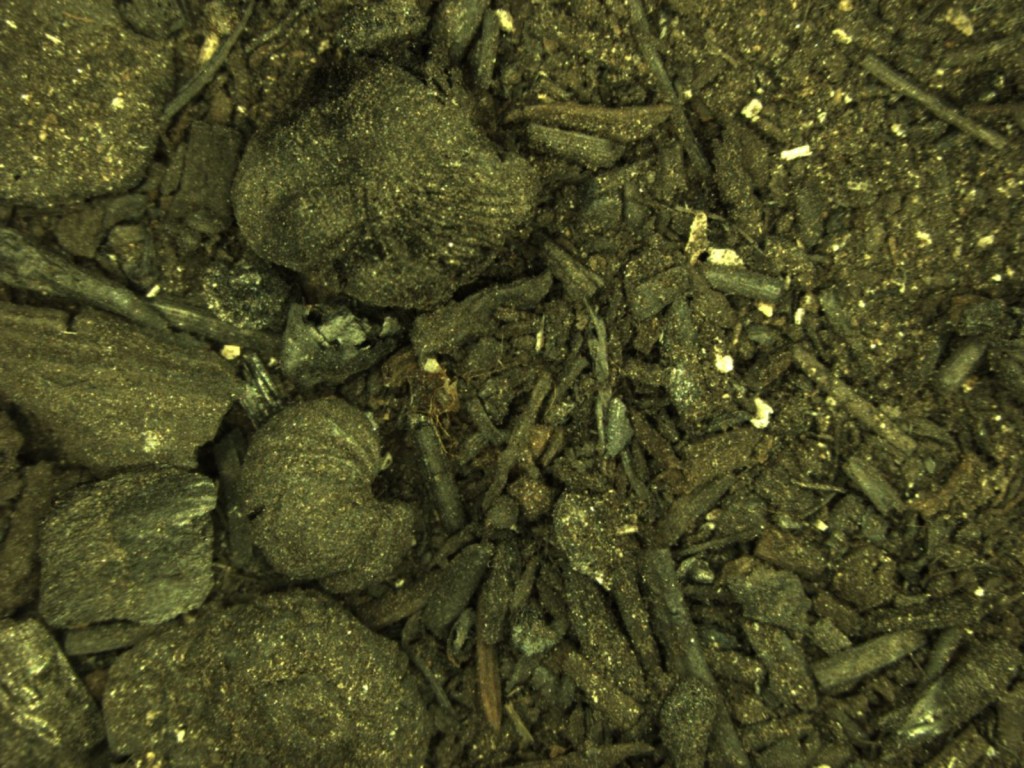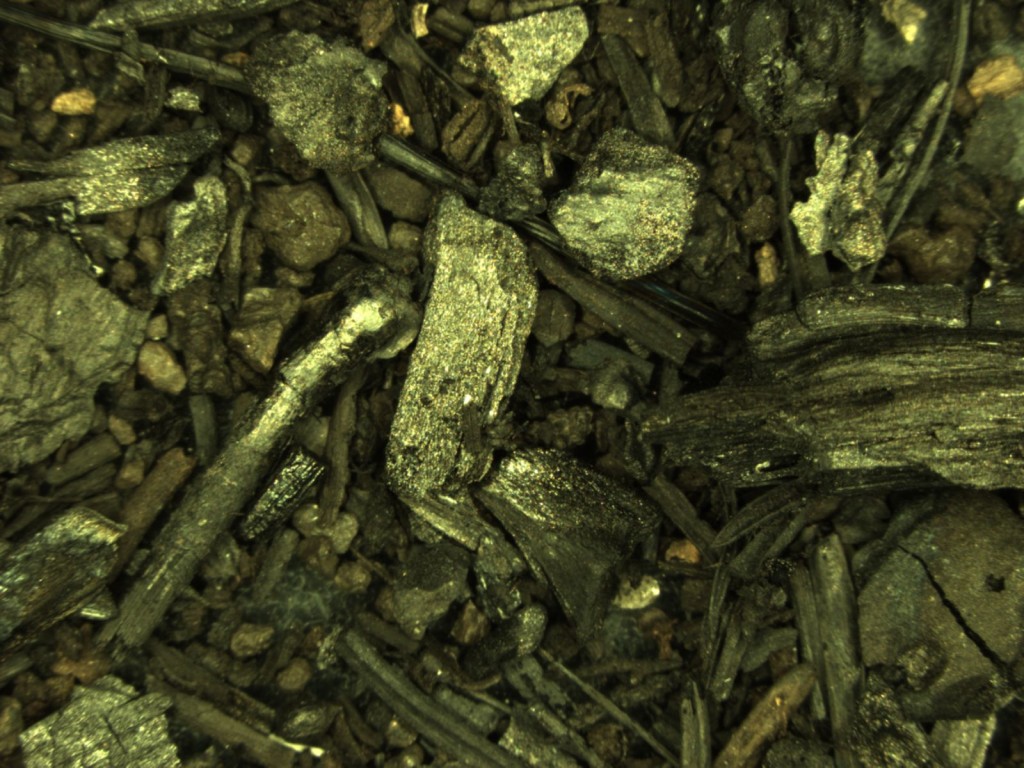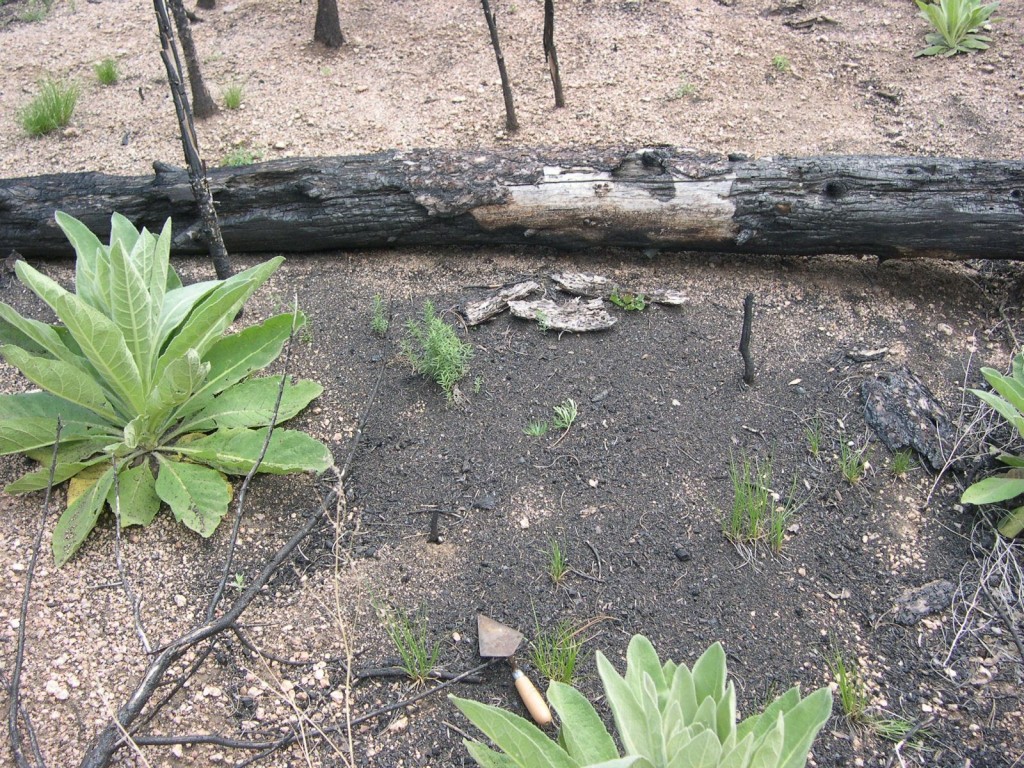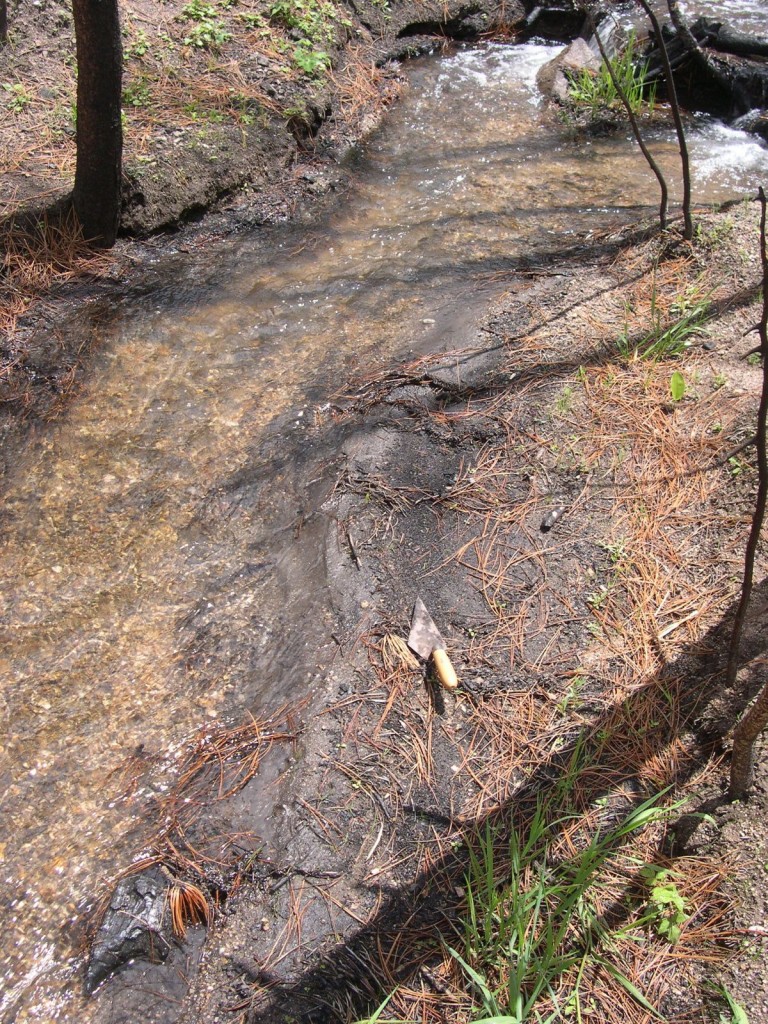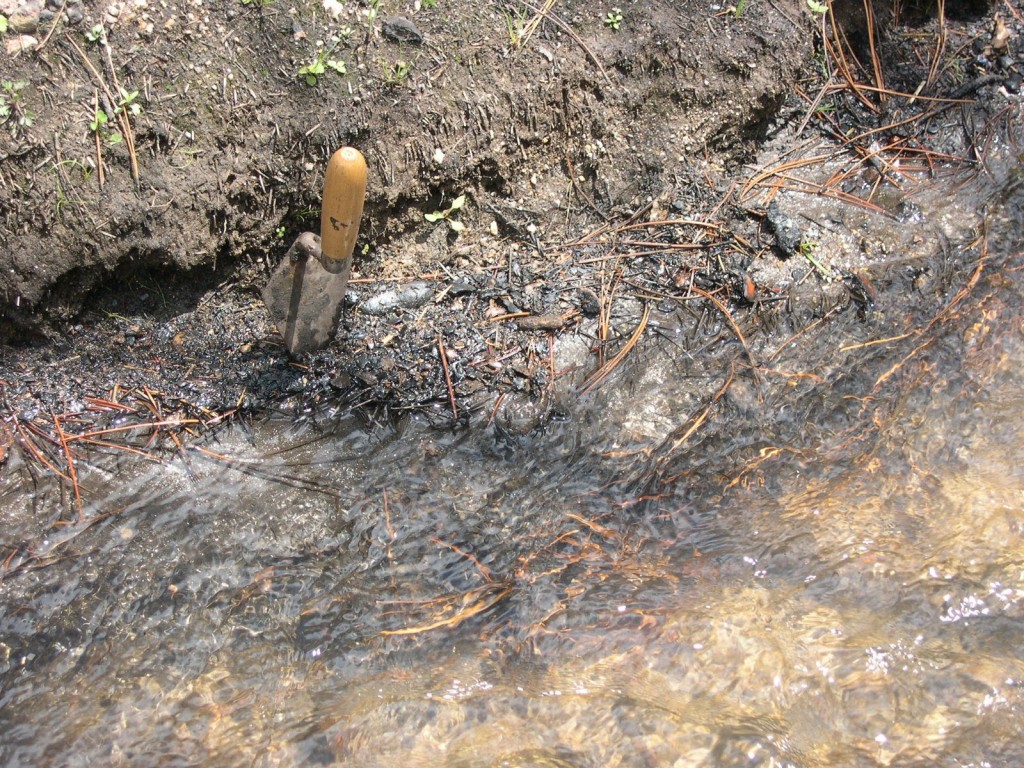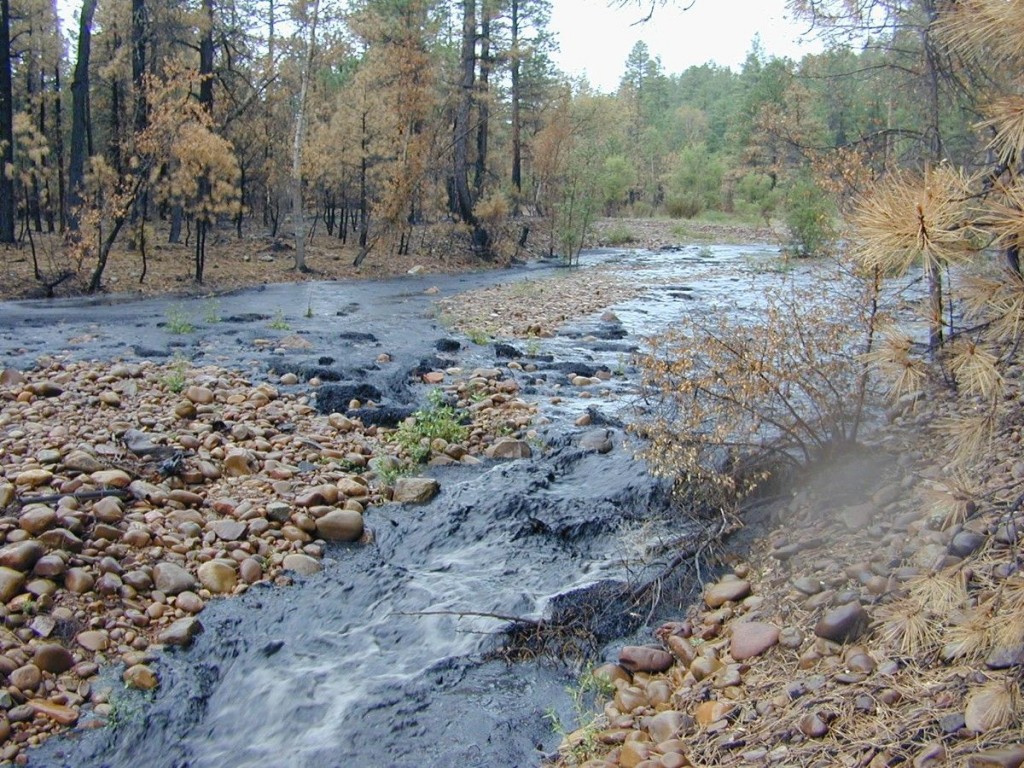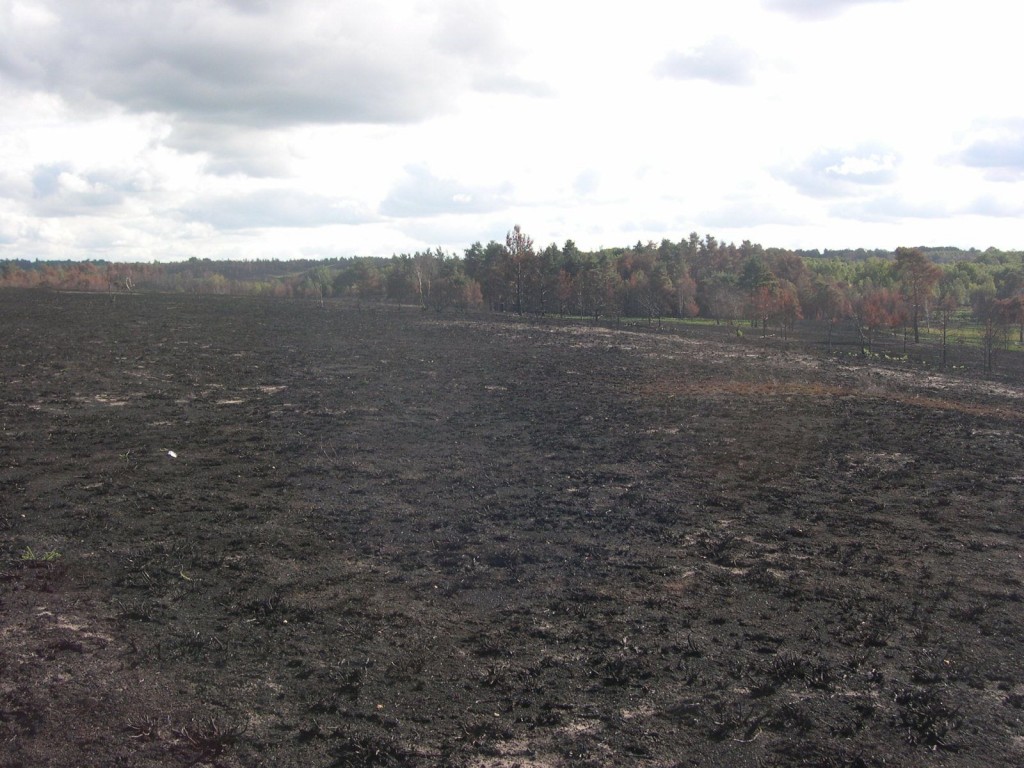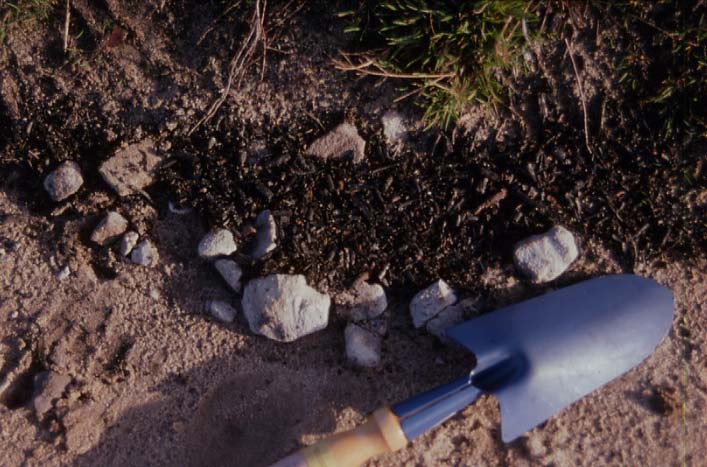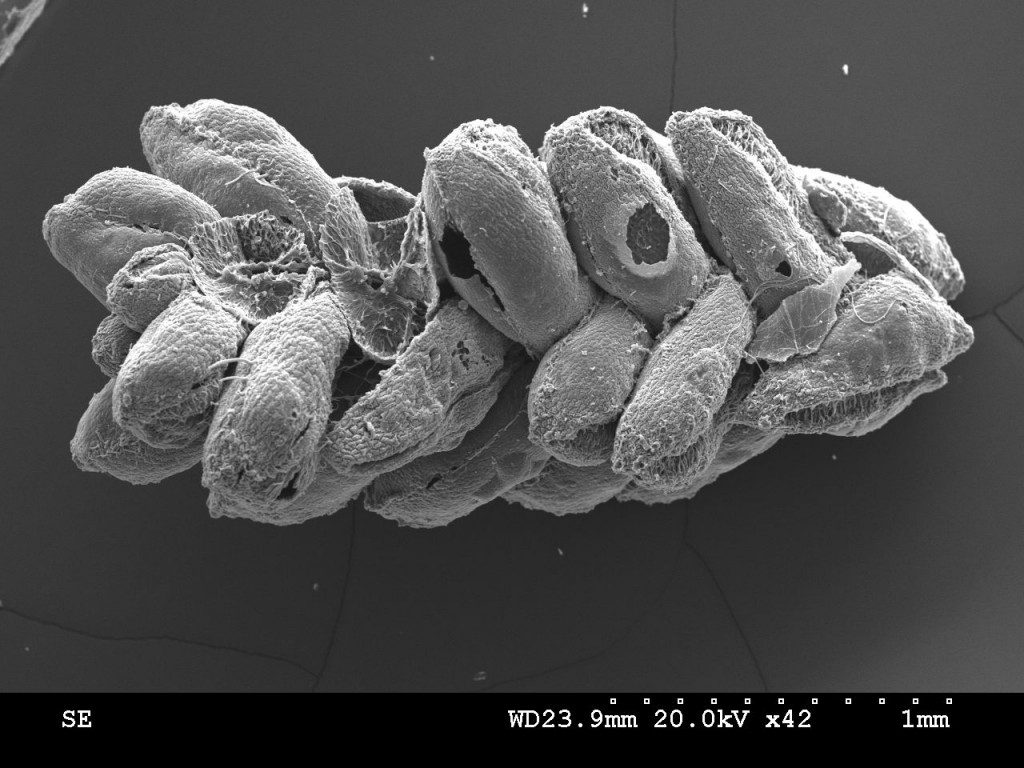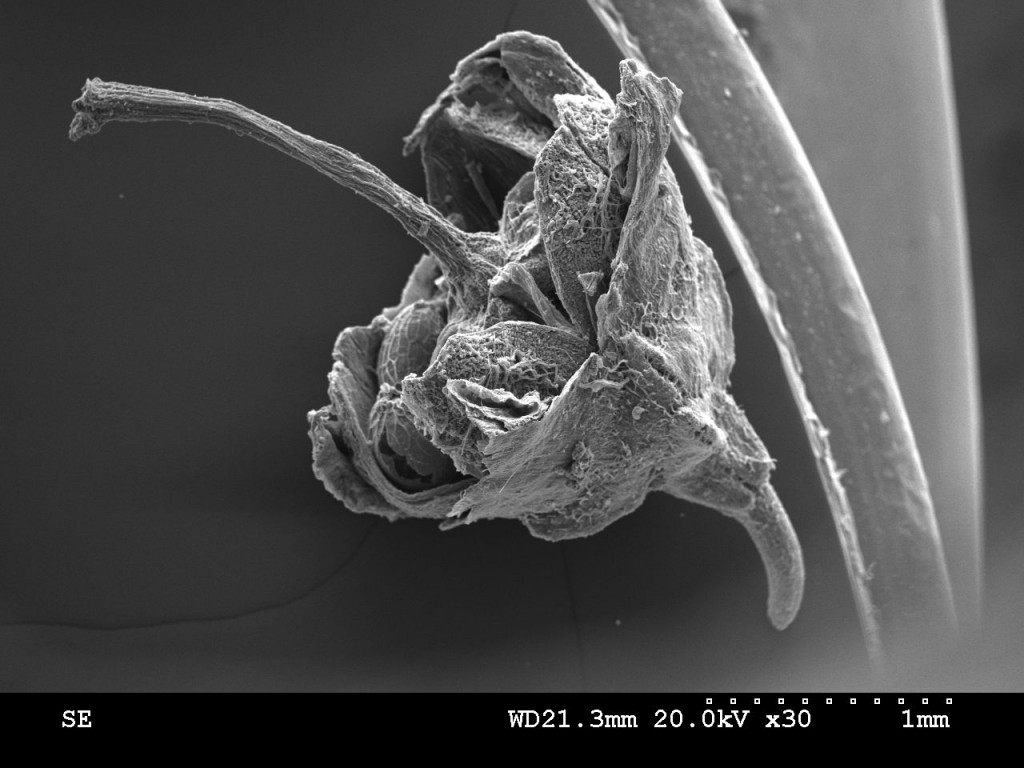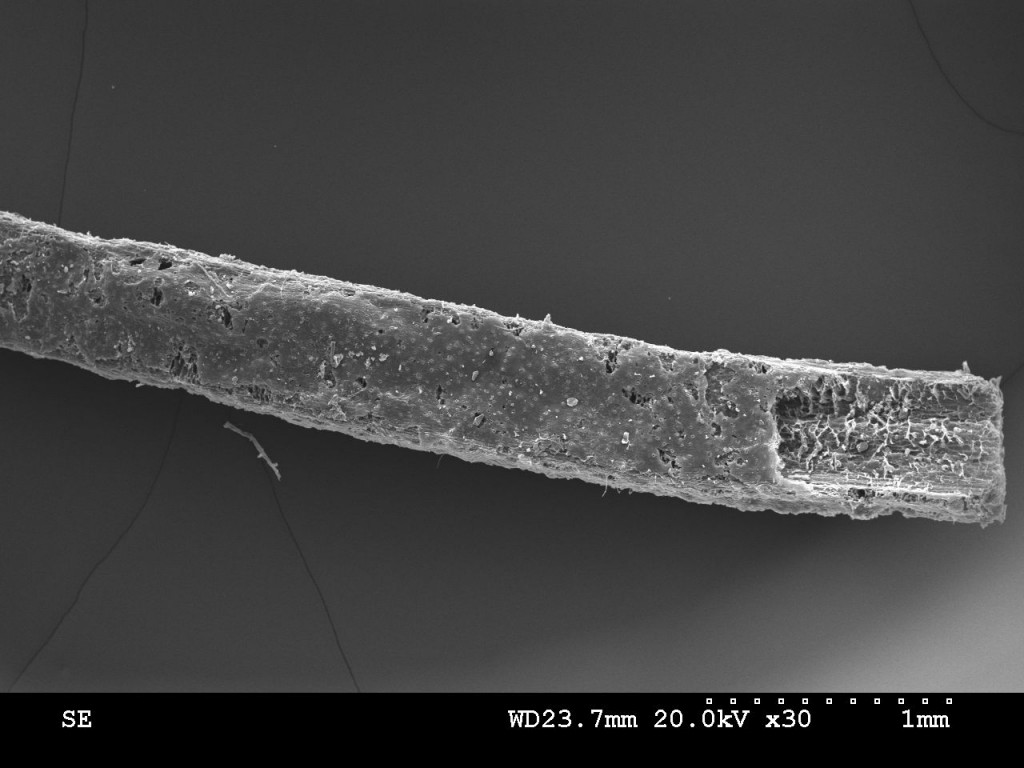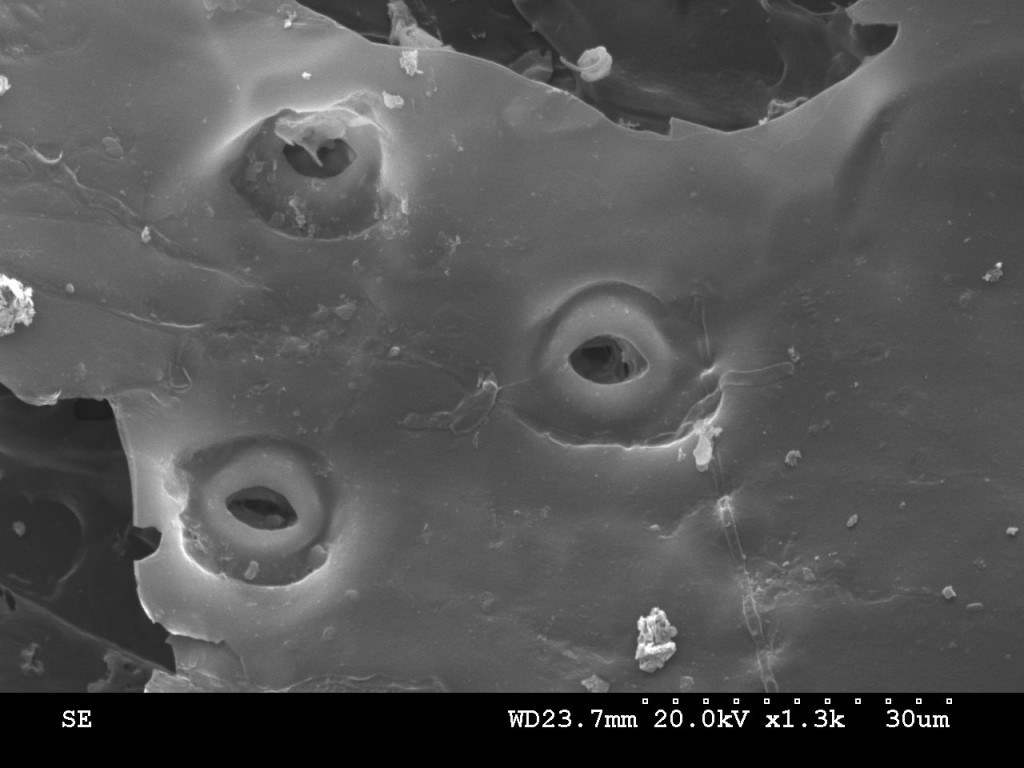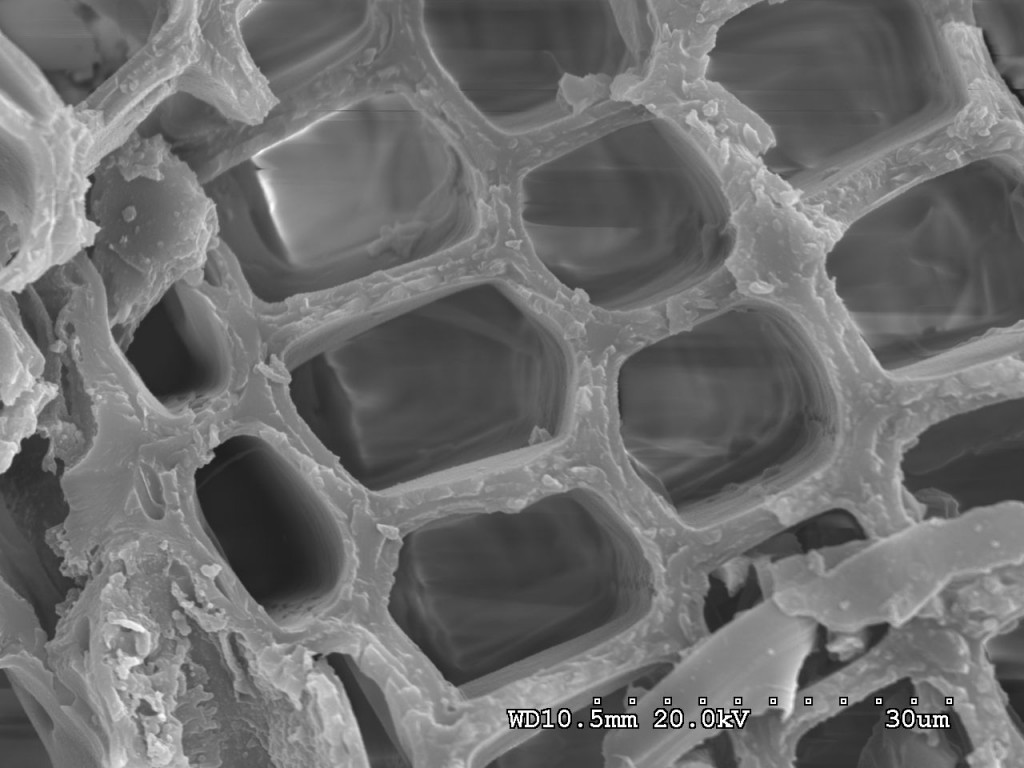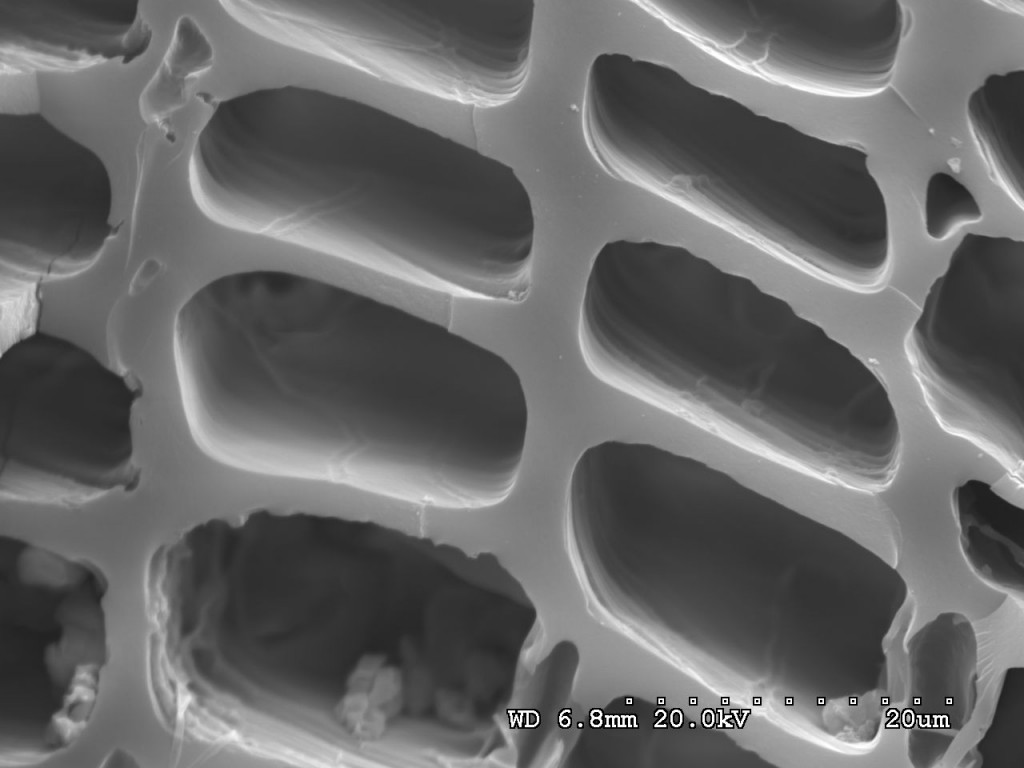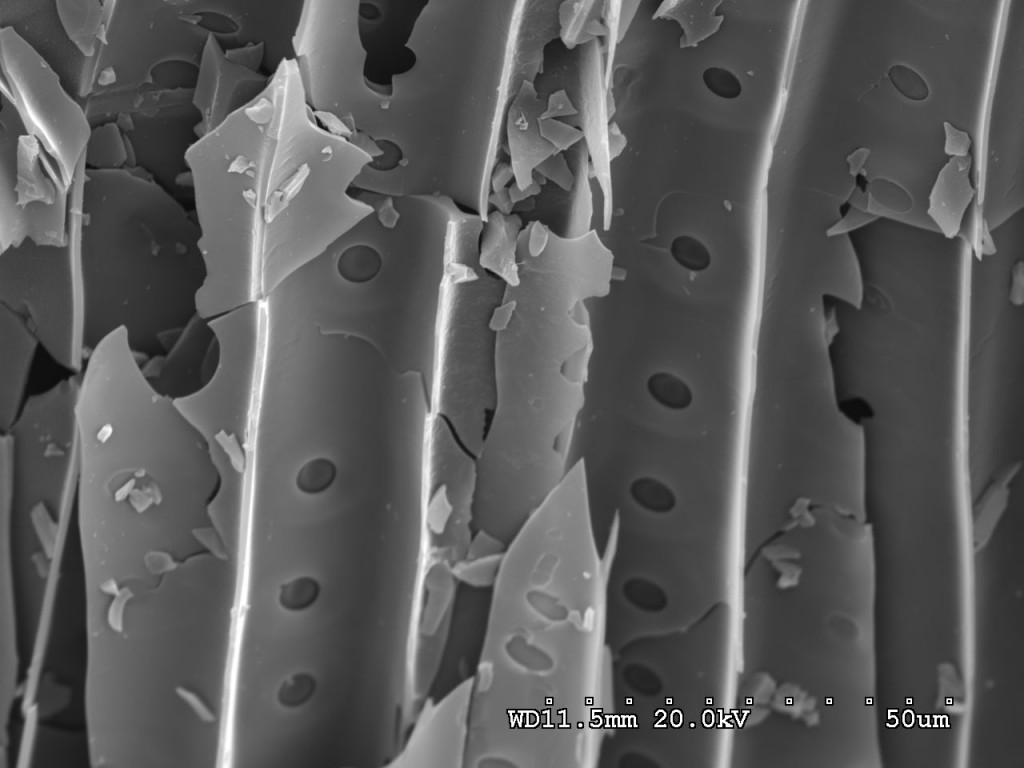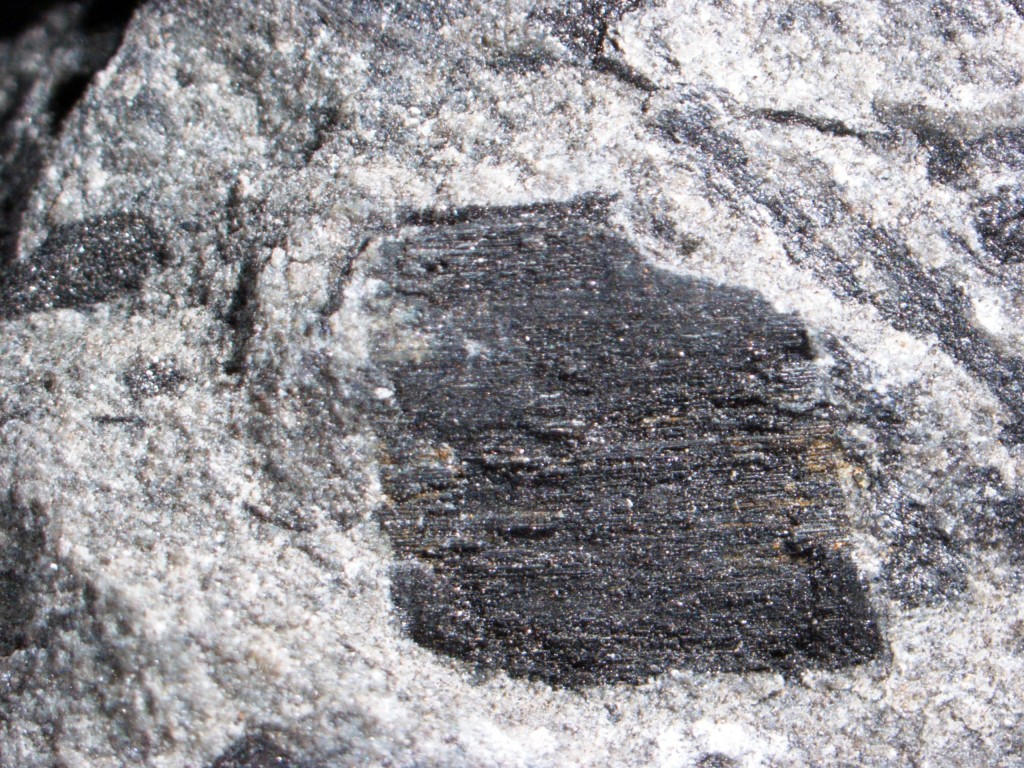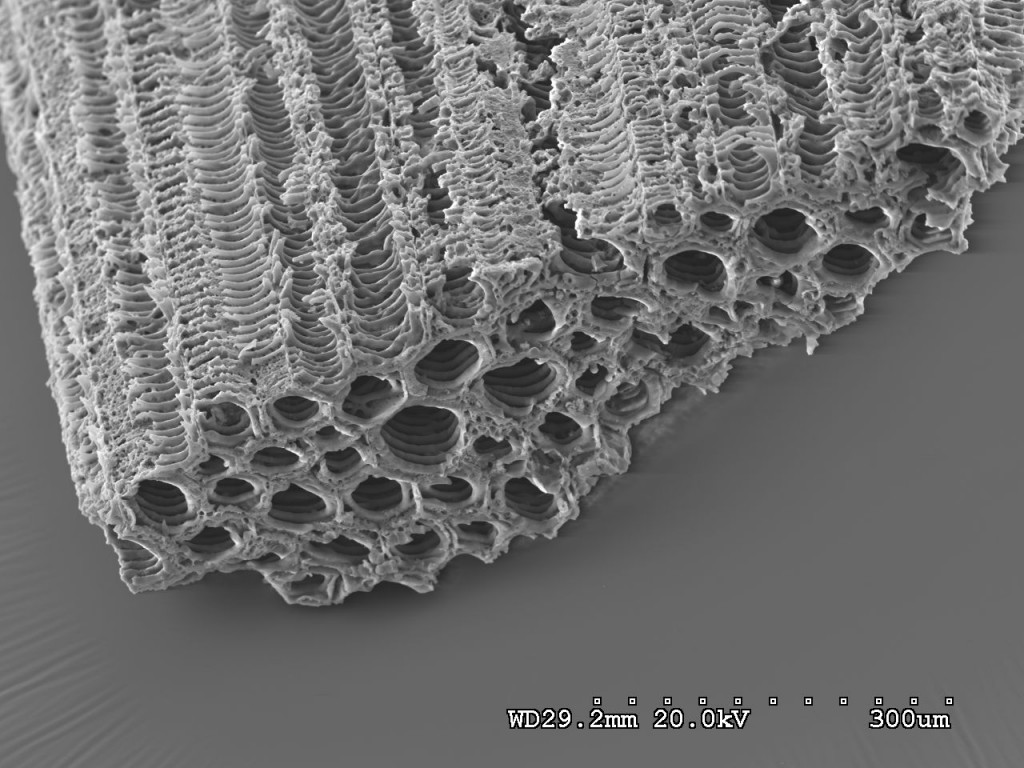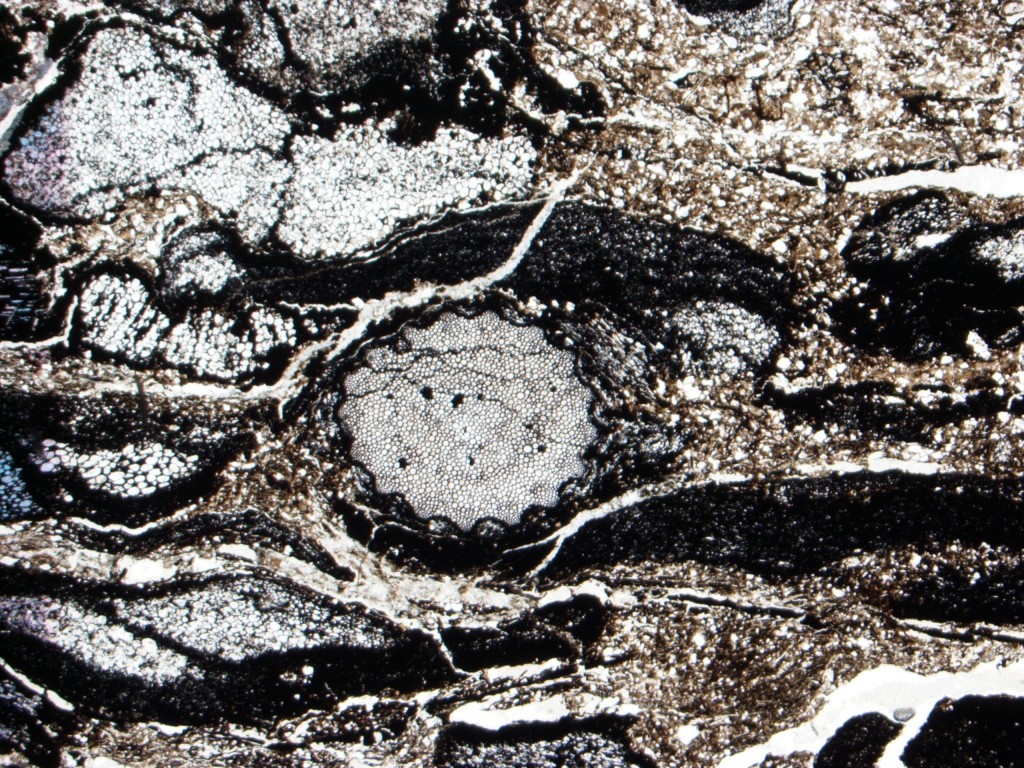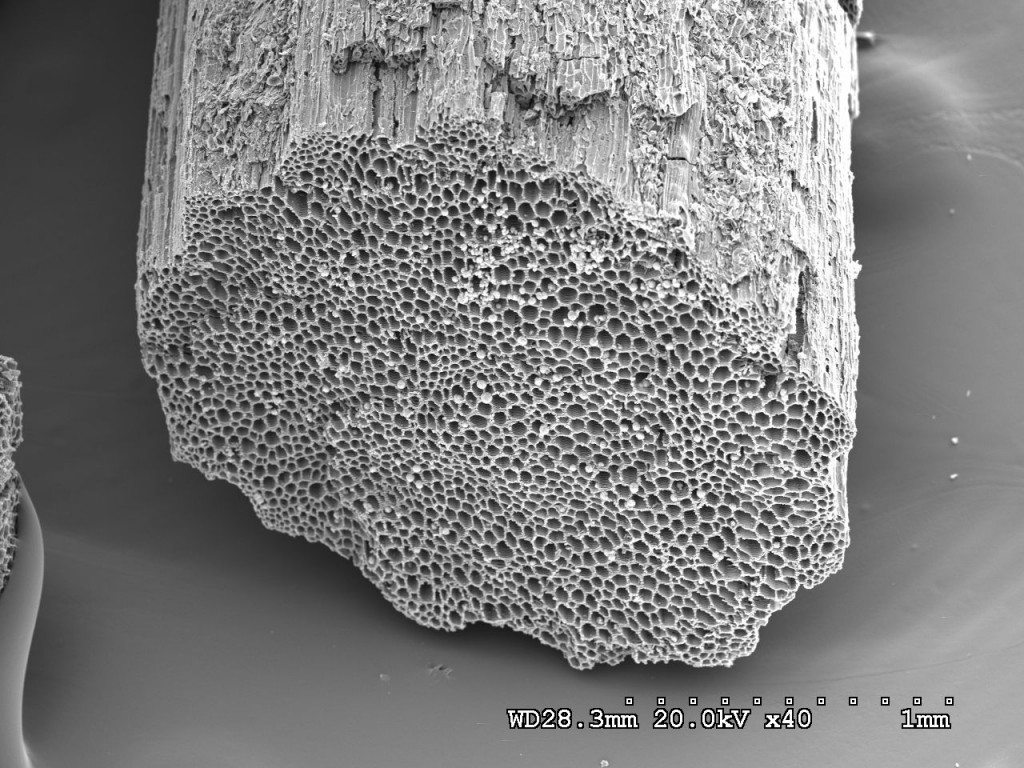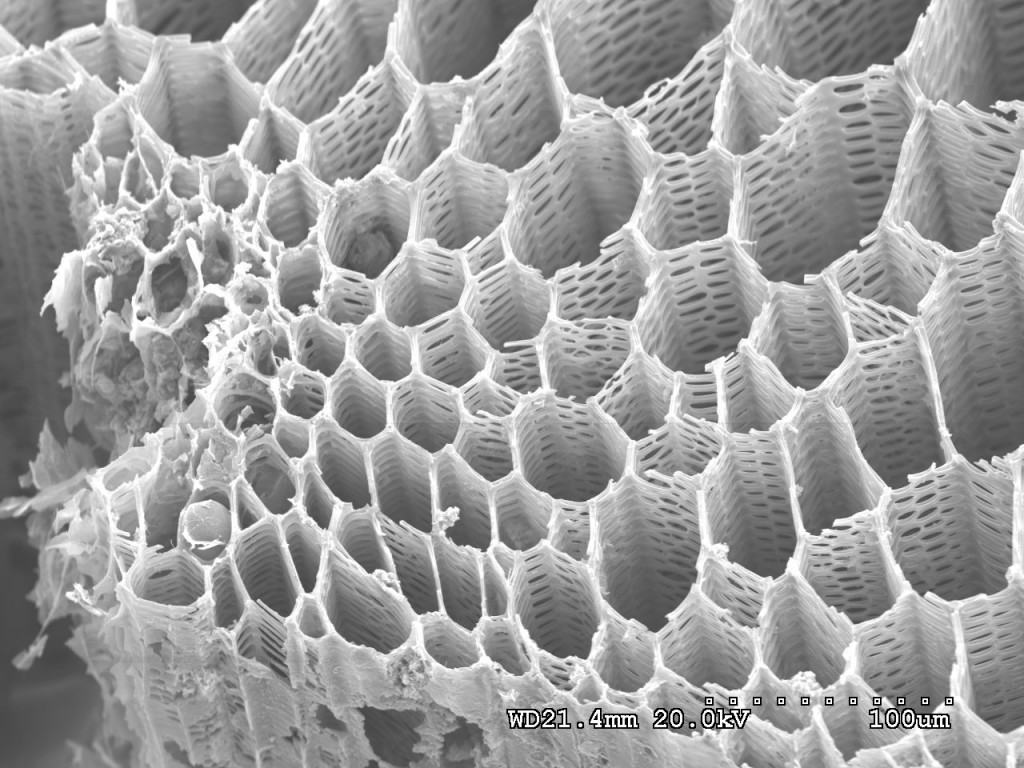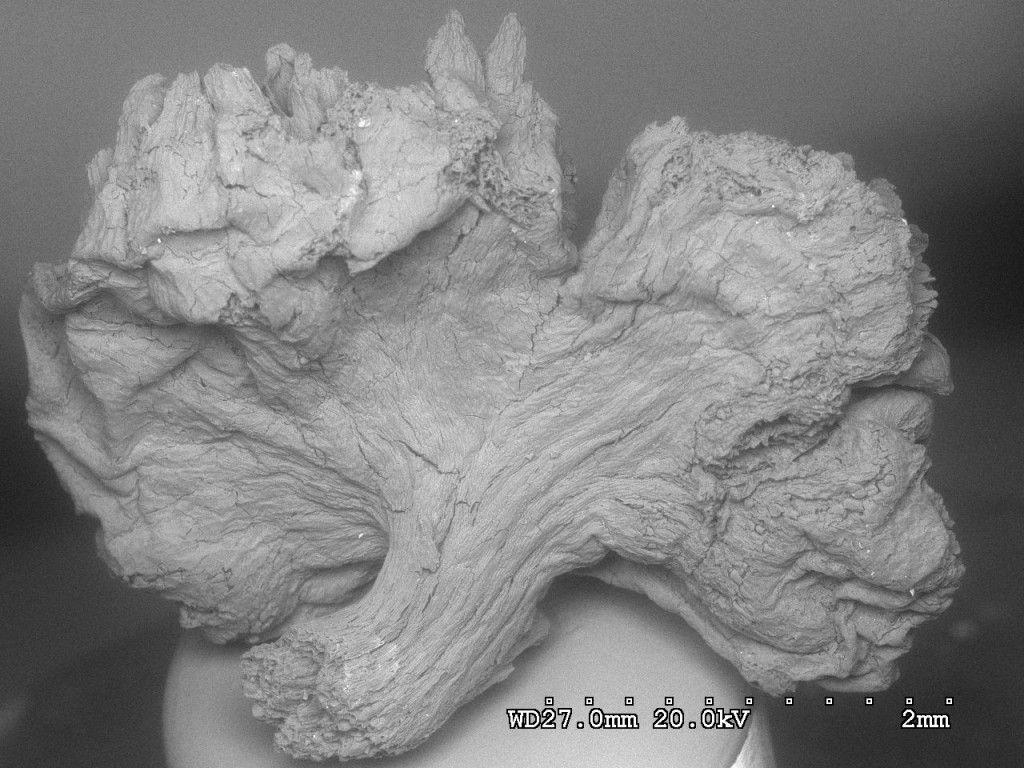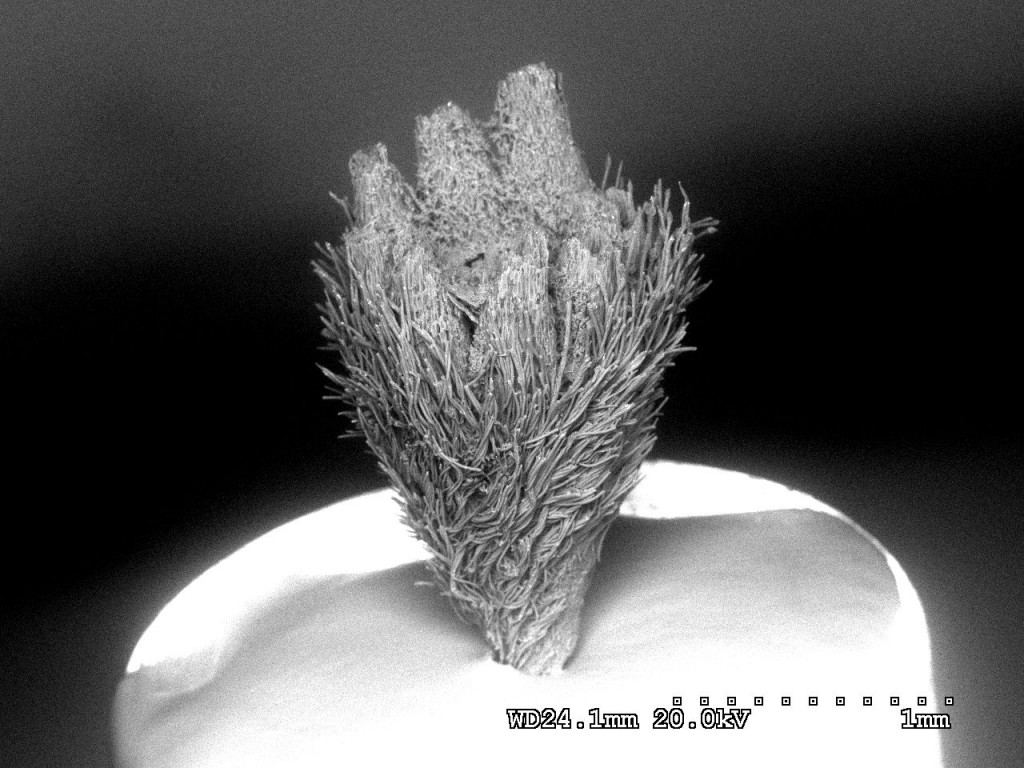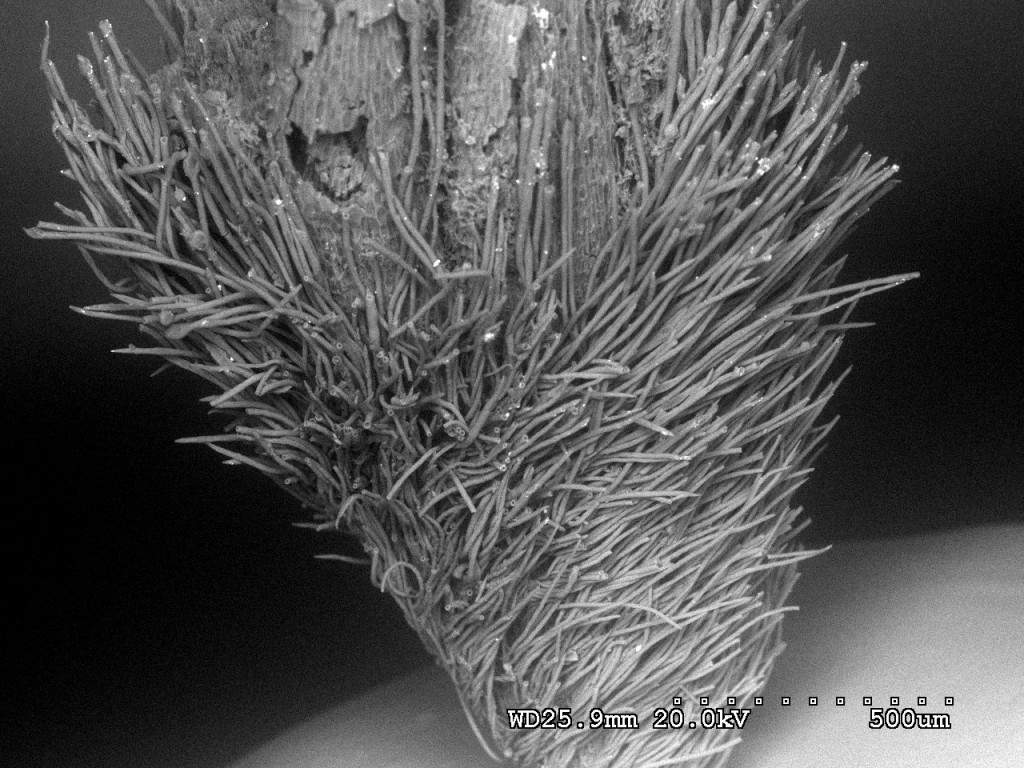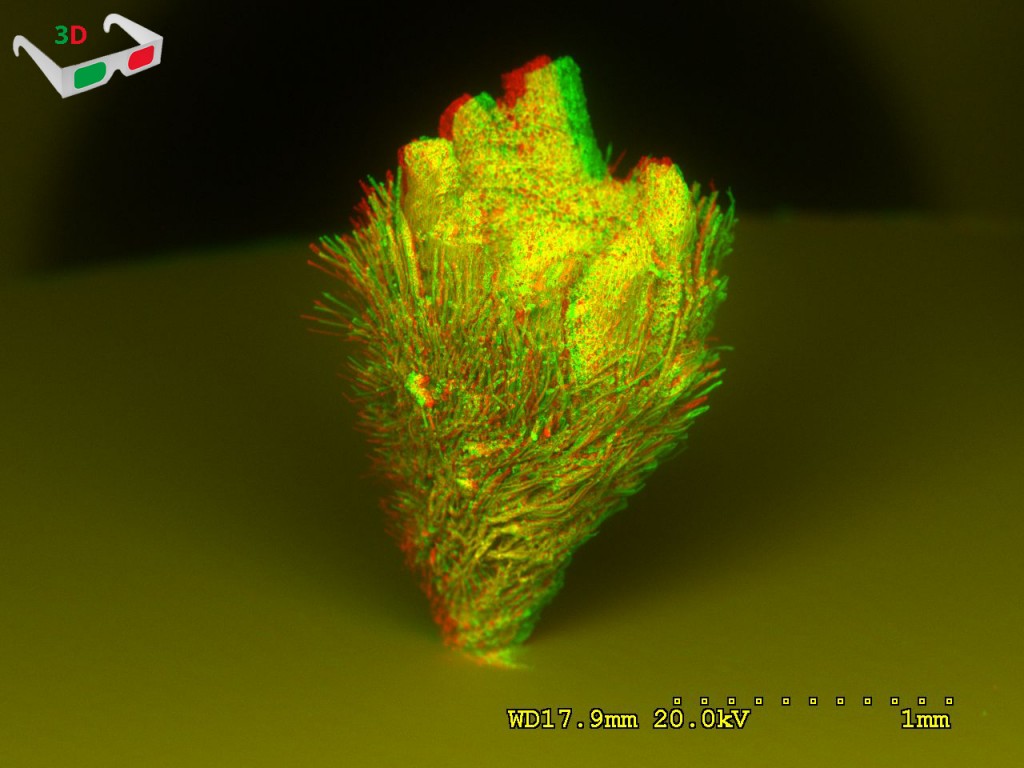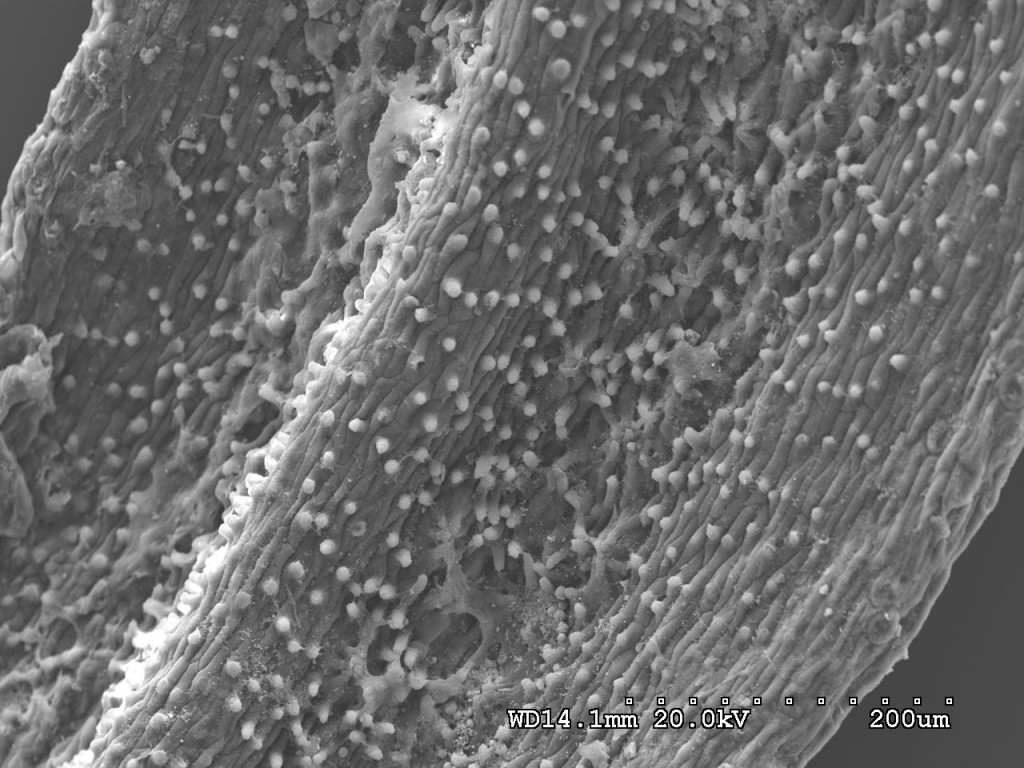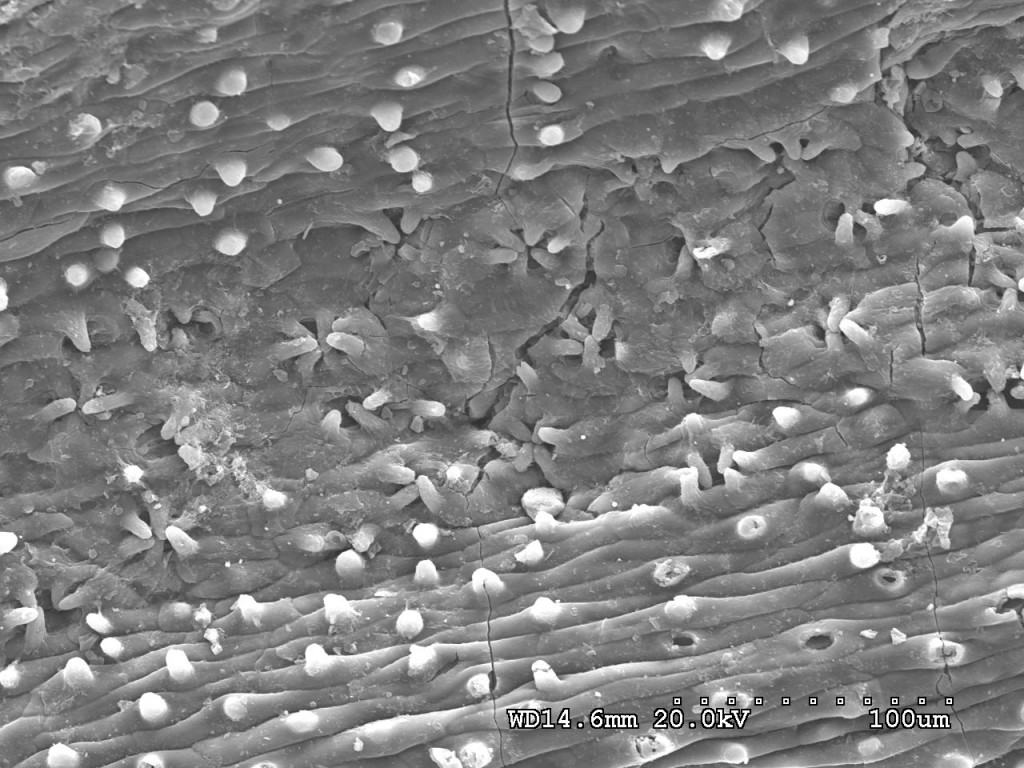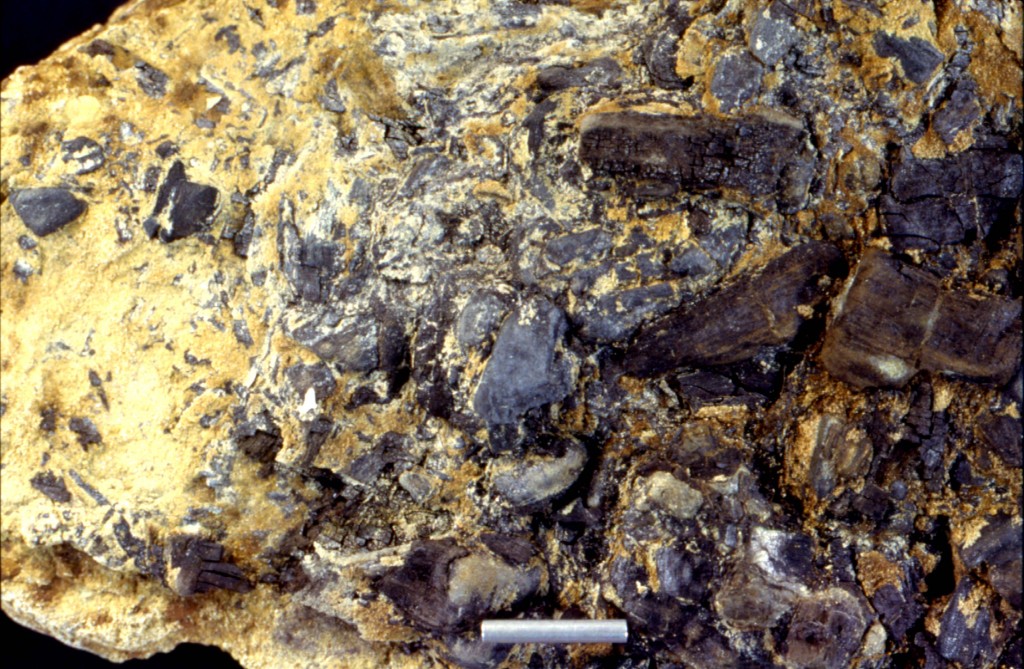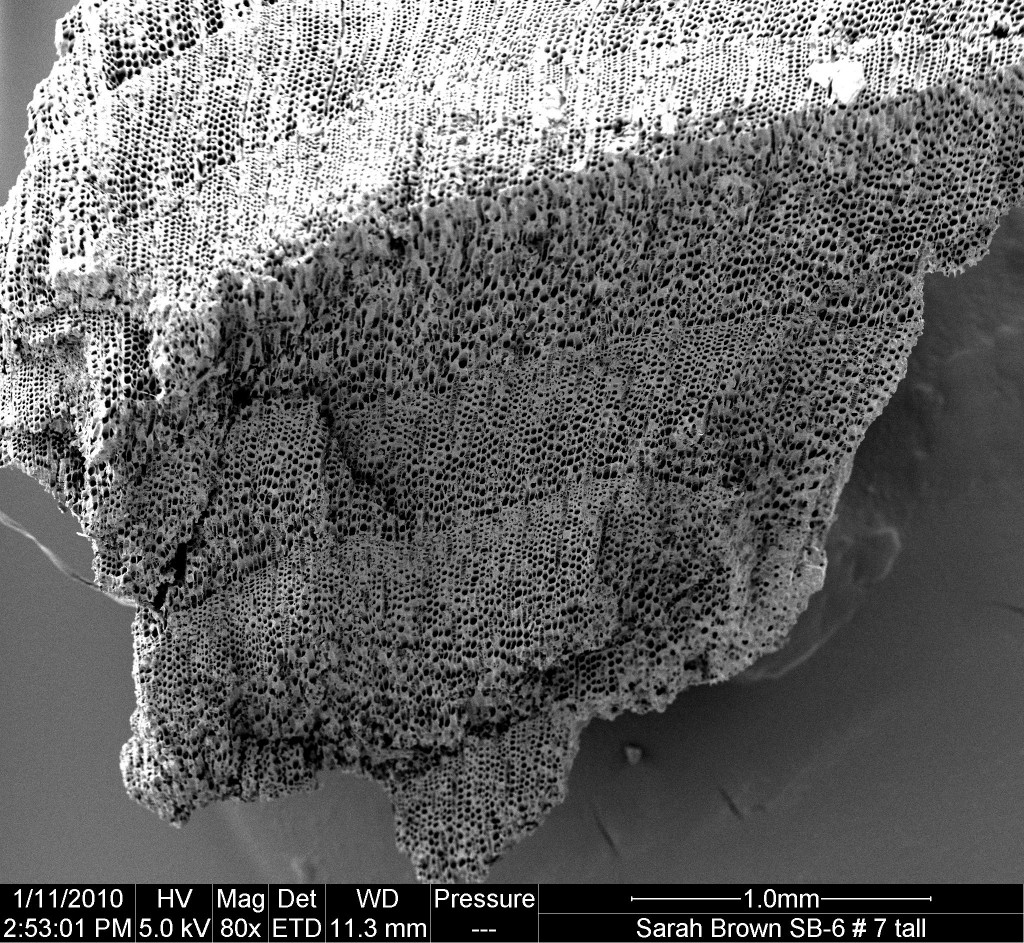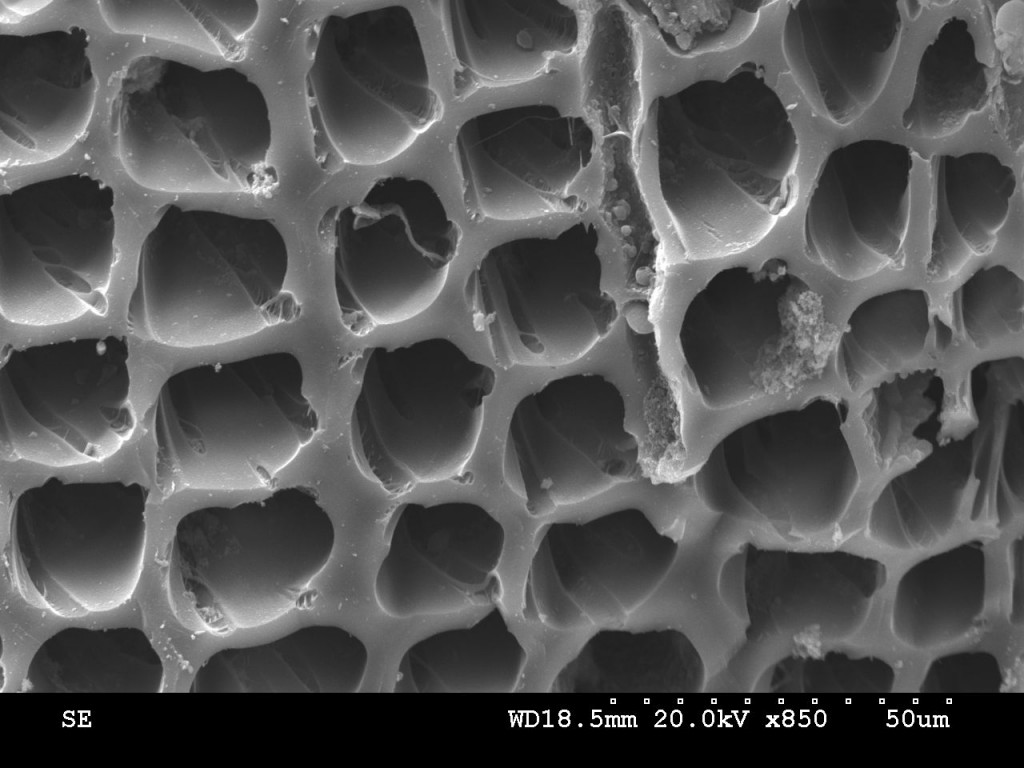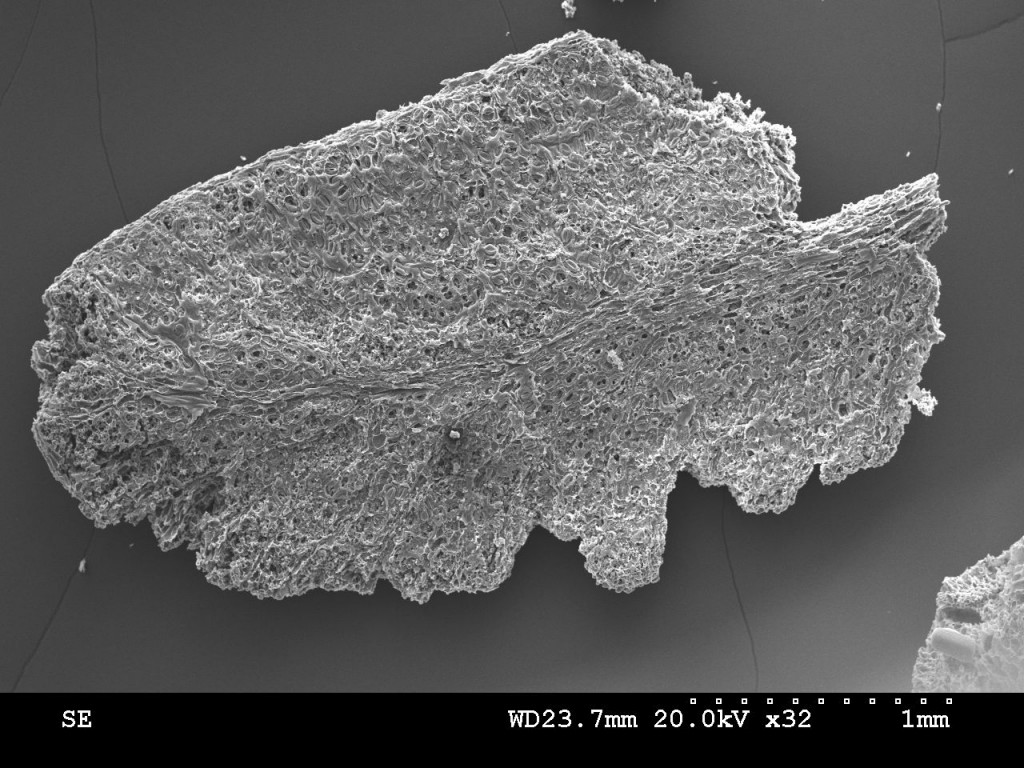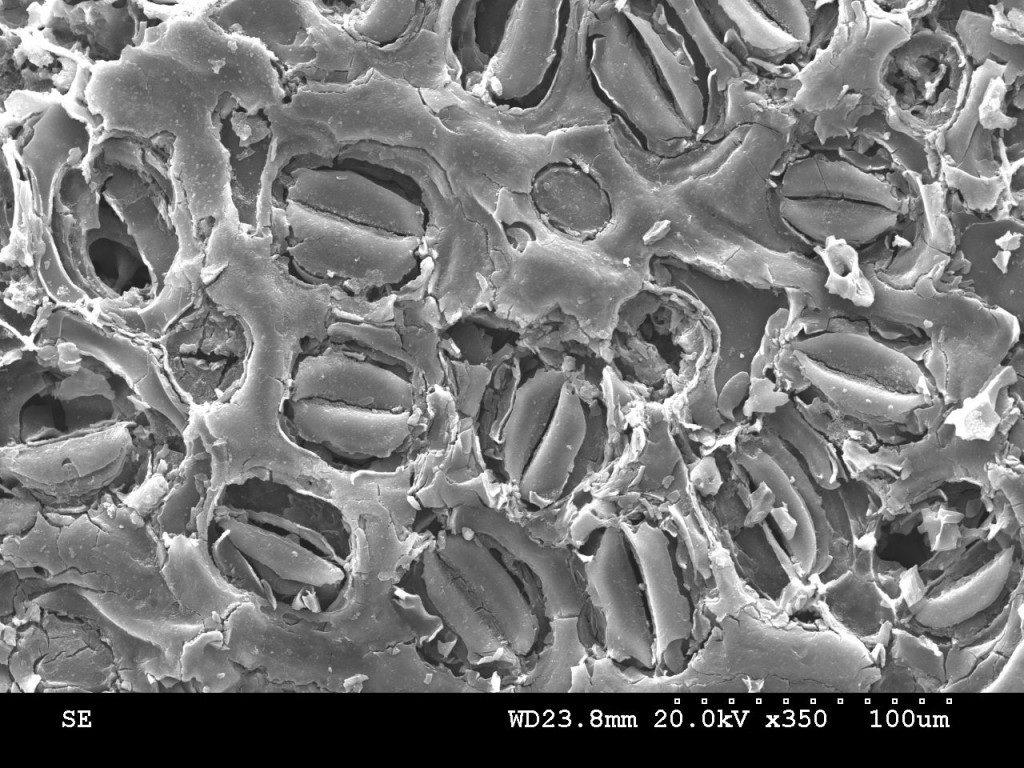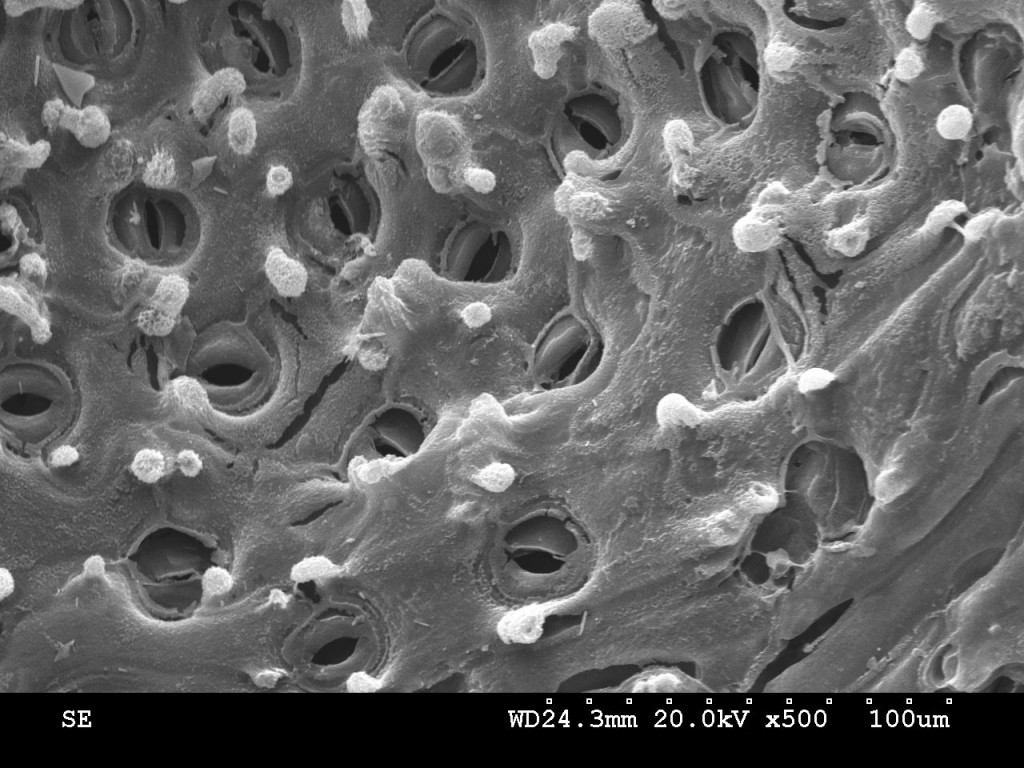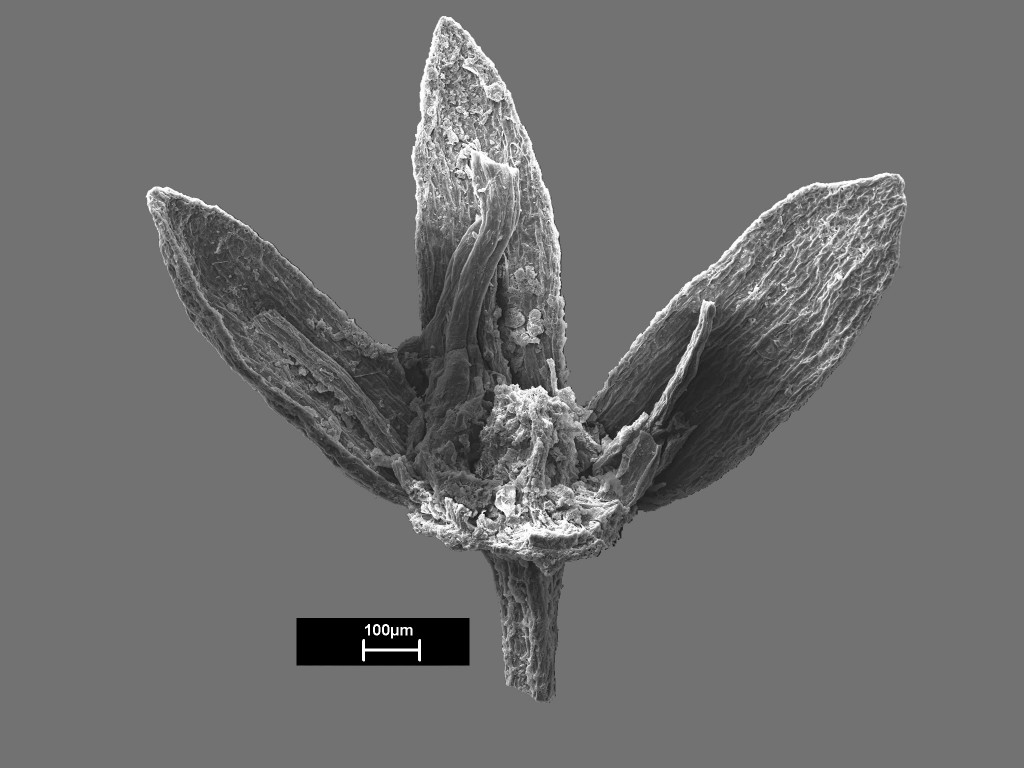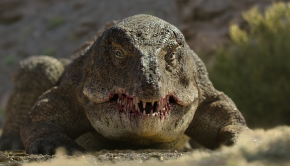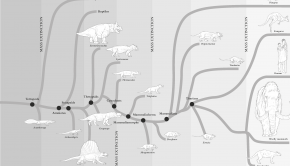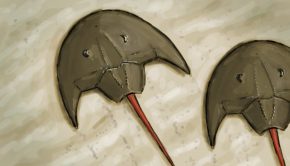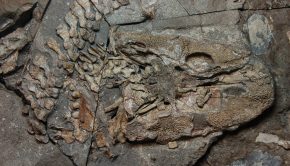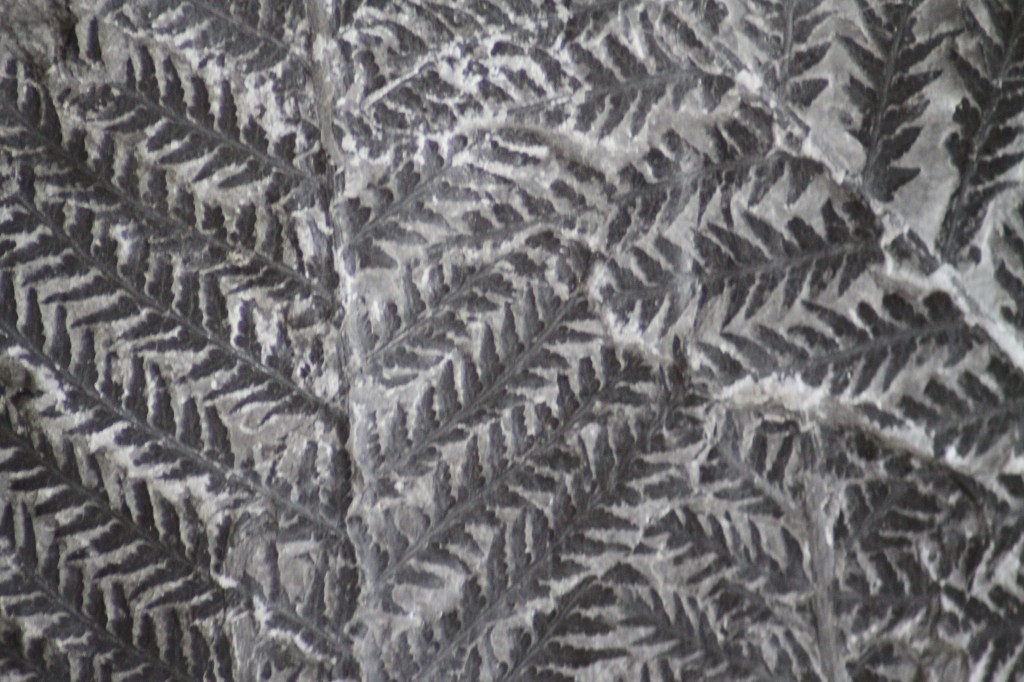Episode 22: Fire and Charcoal
Most people would consider fire to be an entirely destructive process, however given the right circumstances organic materials can be exquisitely preserved by charcoalification. We no doubt all know charcoal from the BBQ, but how many of us stop to consider what it actually is?
Charcoal is formed when organic material is subjected to high temperatures in the absence of oxygen. In this situation oxidation (burning) is not possible, however water and volatiles are driven off leaving behind a carbon-rich residue. This thermochemical alteration not only increases the preservation potential of the material in the fossil record, but can also preserve details down to a cellular level as a ‘carbon skeleton’.
In this multimedia-rich episode, we discuss the importance of this greatly overlooked source of palaeontological information with Professor Andrew C. Scott of the Department of Earth Sciences, Royal Holloway University of London. You can follow Prof. Scott’s work here.
(all images copyright A.C.Scott unless otherwise indicated)
Podcast: Download (Duration: 41:10 — 33.0MB)
Modern Fires 1
Fire are very widespread across the Earth, and this has been the case for 400 million years. Despite the impression that fire completely destroys all in its wake this is not true.
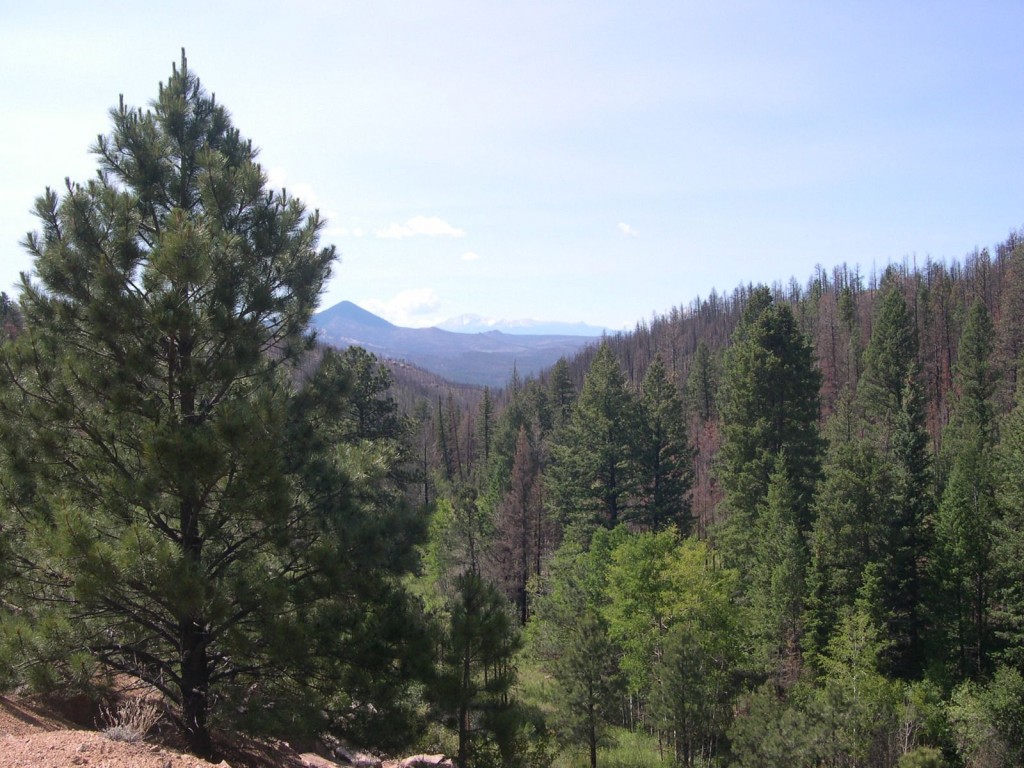
This is a picture following the Hayman Fire near Denver in Colorado in the USA in 2002. Note the patchwork nature of the burn and that not all the trees were killed.
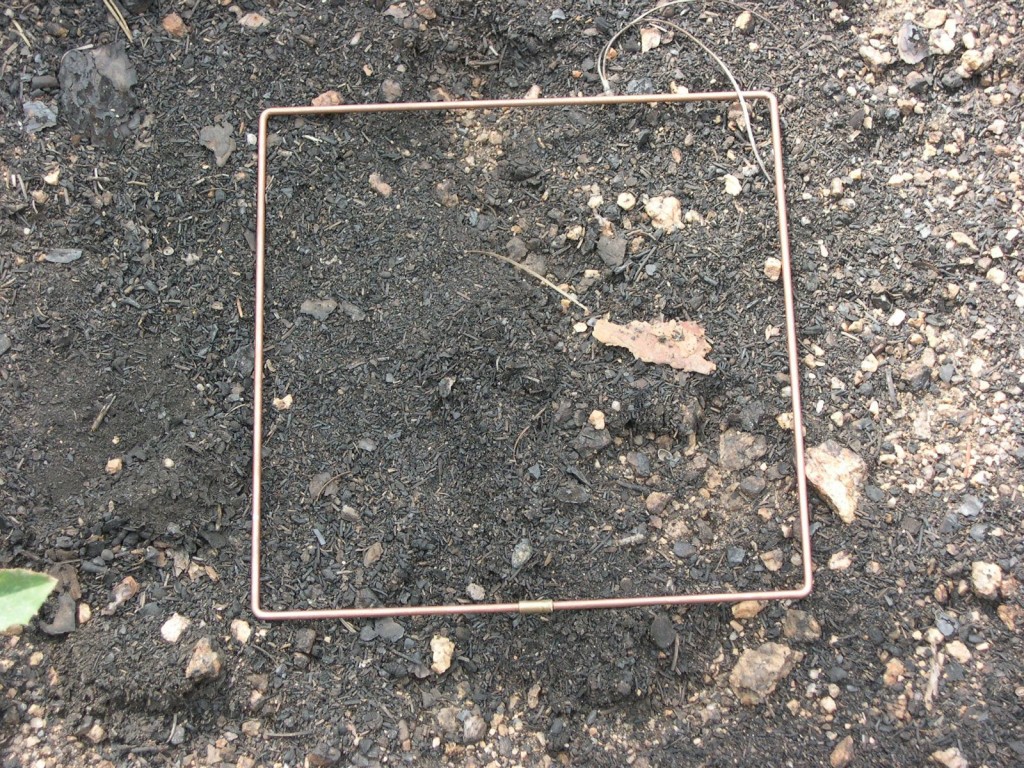
On the forest floor you can see charcoal remains from the burning of the forest litter. The quadrat is 20x20cm.
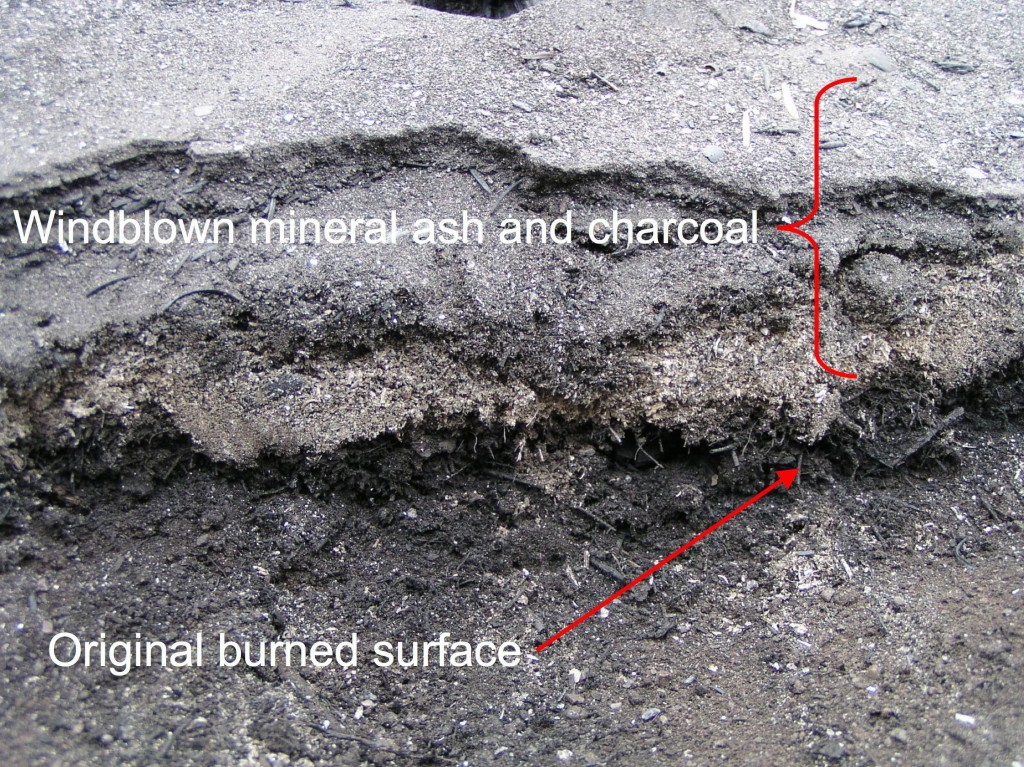
In such fires some of the litter is turned to white mineral ash, but often large quantities of charcoal remain. (photo Deborah Martin USGS)

Sediment deposition may increase up to 30x resulting from post-fire erosion, filling stream and river channels (photo Greg Smith, USGS)…

…and even creating alluvial fans overnight (Photo John Moody, USGS) (see also images in Scott et al., 2013).
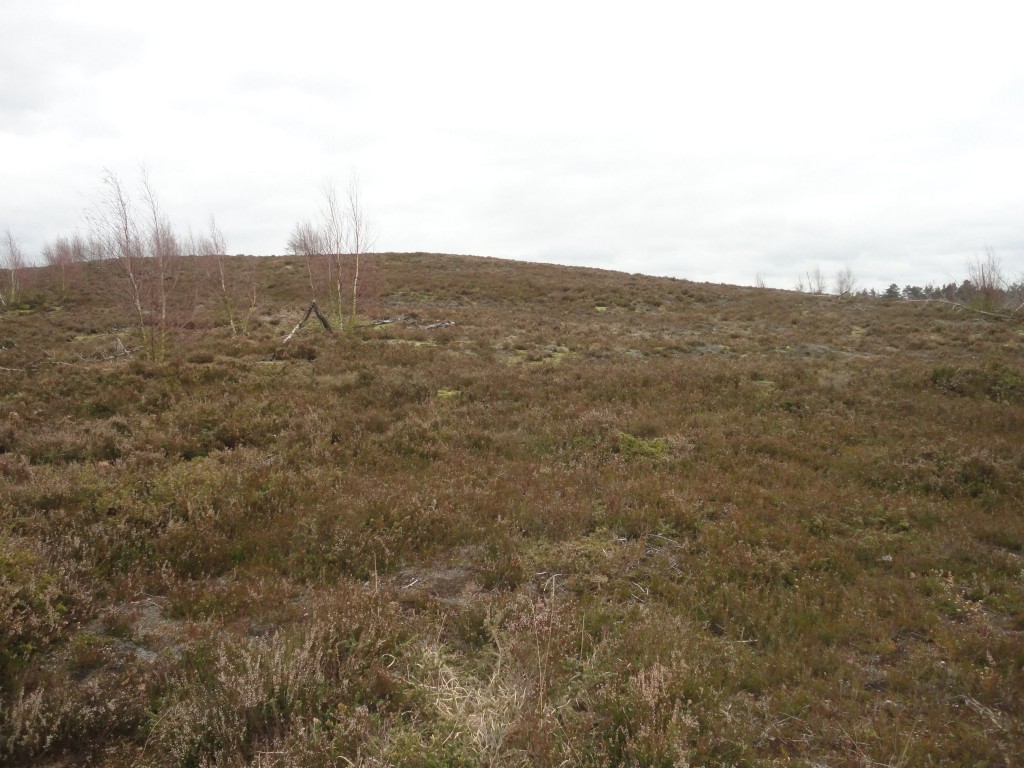
Fires may also occur in heathlands, such as this heather dominated one in Frensham, Southern England.
The following discussion on the Frensham fires is an extract from The Naked Scientists podcast.
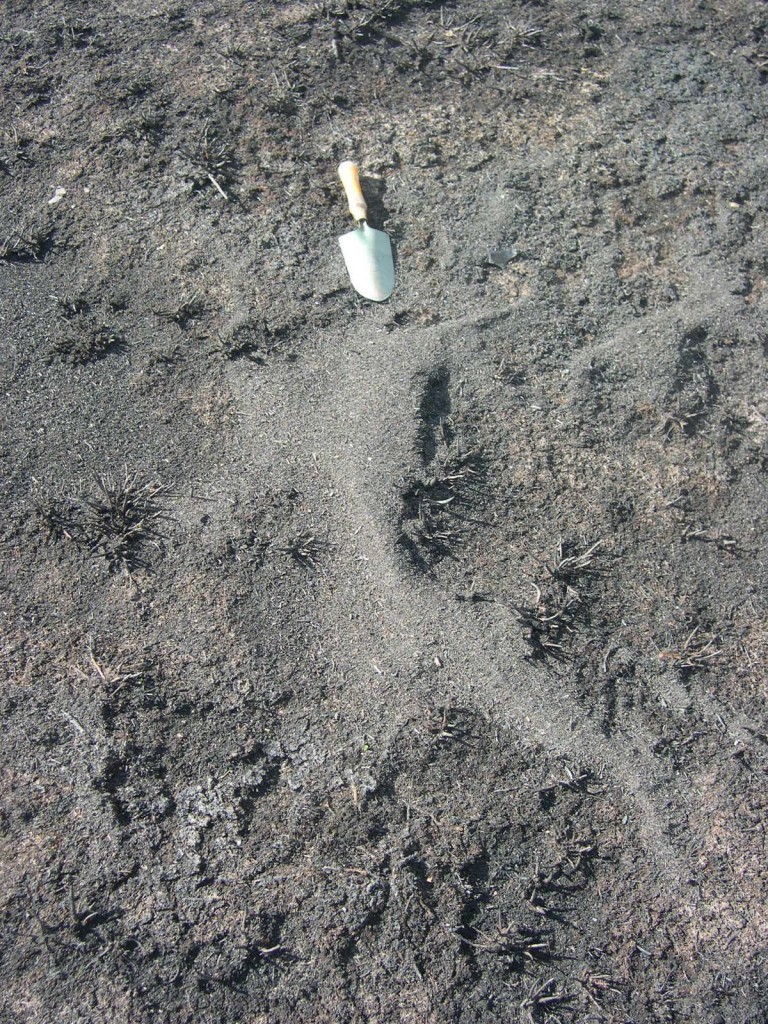
Here charcoal is also preserved and may be blown into ripples containing primarily charred leaves and flowers…
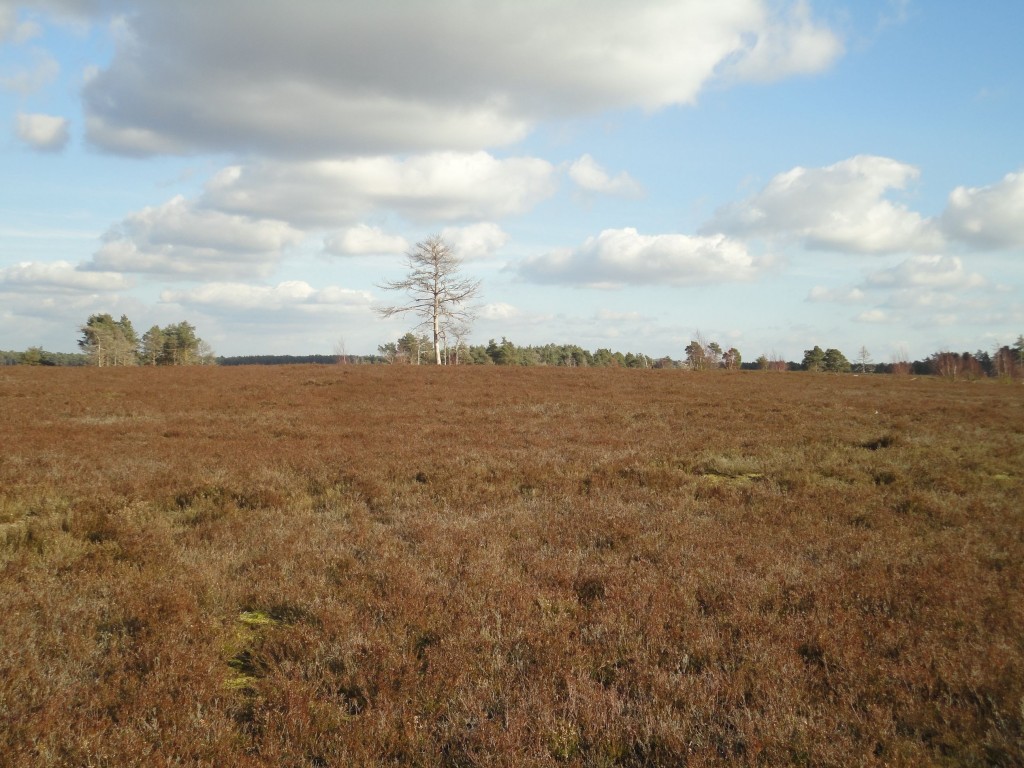
The heather will recover well; there is little evidence of the fire that burnt these areas only a few years earlier.
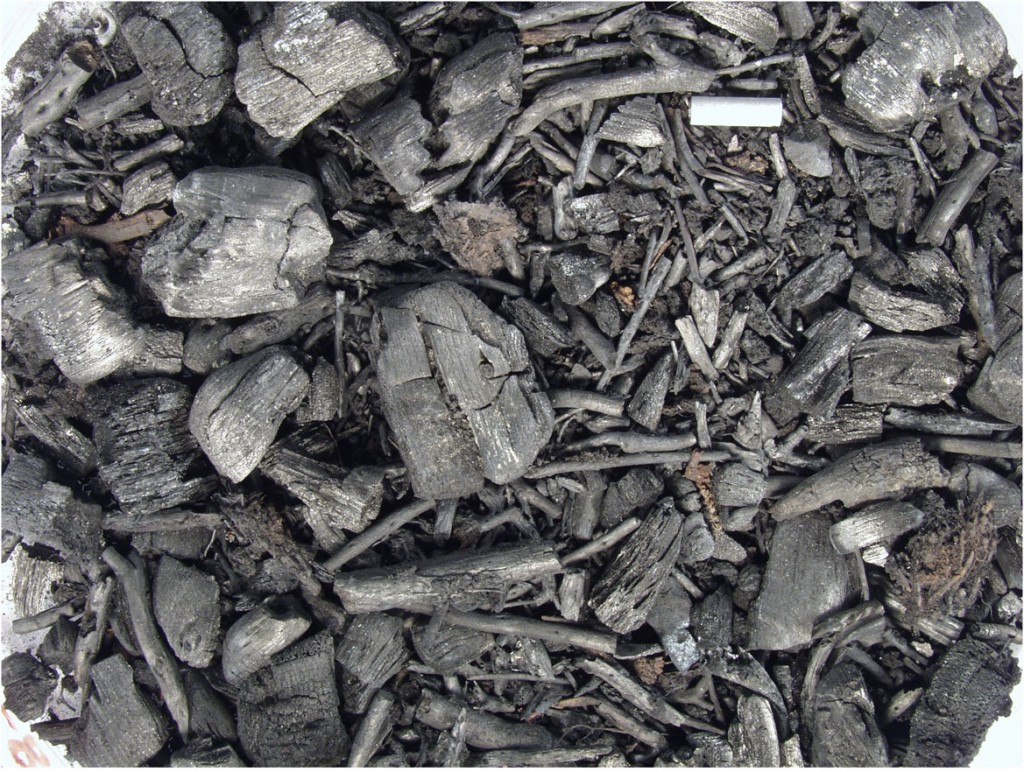
Charcoal from these sites may be collected and examined with a hand lens when the anatomical structure of the plants can be seen. However for the best view of the anatomy is seen under the scanning electron microscope (SEM).
Fire in Deep Time 2
As the plant cell walls are converted to almost pure carbon during the charcoalification process they may be readily preserved in the fossil record.
Fossil charcoal is very abundant in a wide range of sedimentary environments. Charcoalified plants occur both non-marine and marine sediments from the Silurian (434-419 ma) onwards but become common in the Carboniferous (359-299 ma).
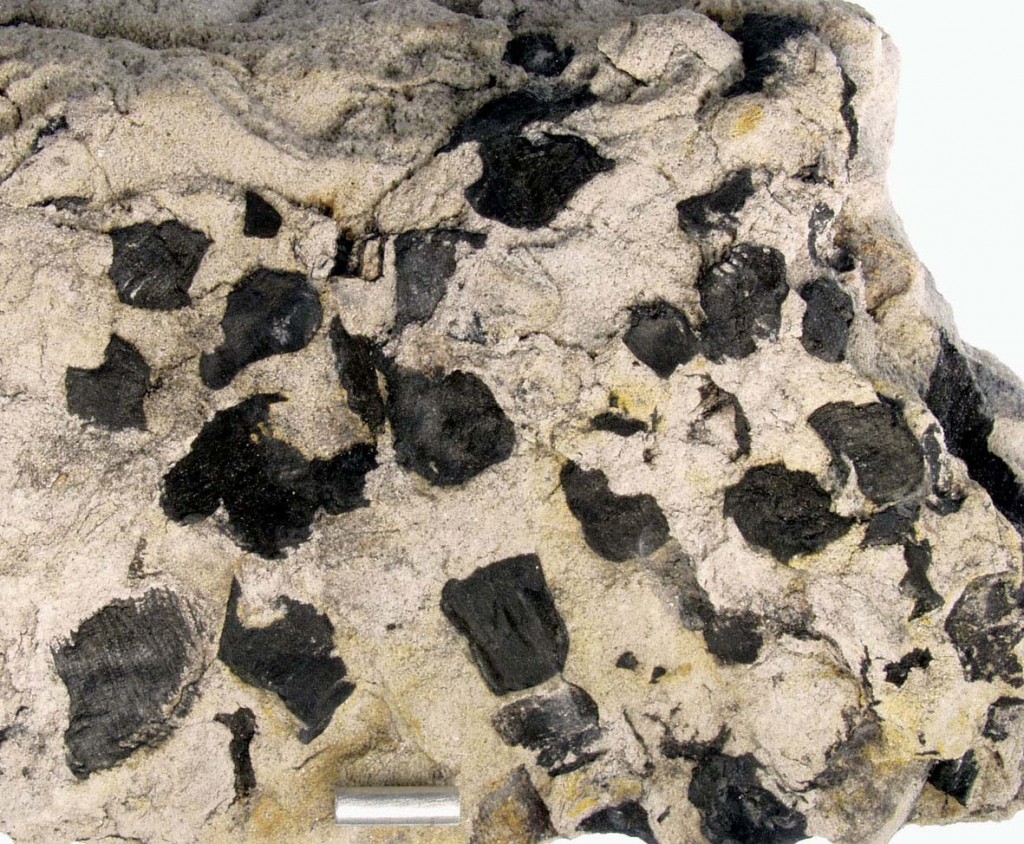
Most would recognise charcoalified wood, as seen here in Yorkshire Jurassic fluvial sandstones, but often smaller plant fragments of other organs are not collected.
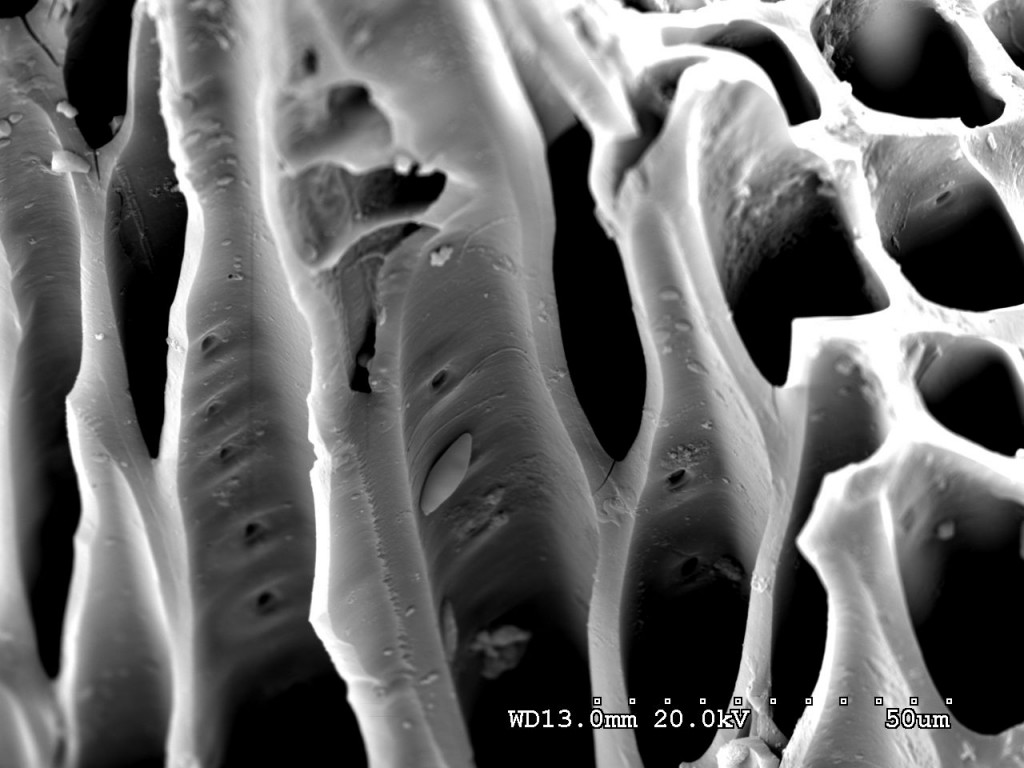
Such homogenization and detail of wall pitting can also be seen in the fossil examples, such as in this 340ma Carboniferous wood.
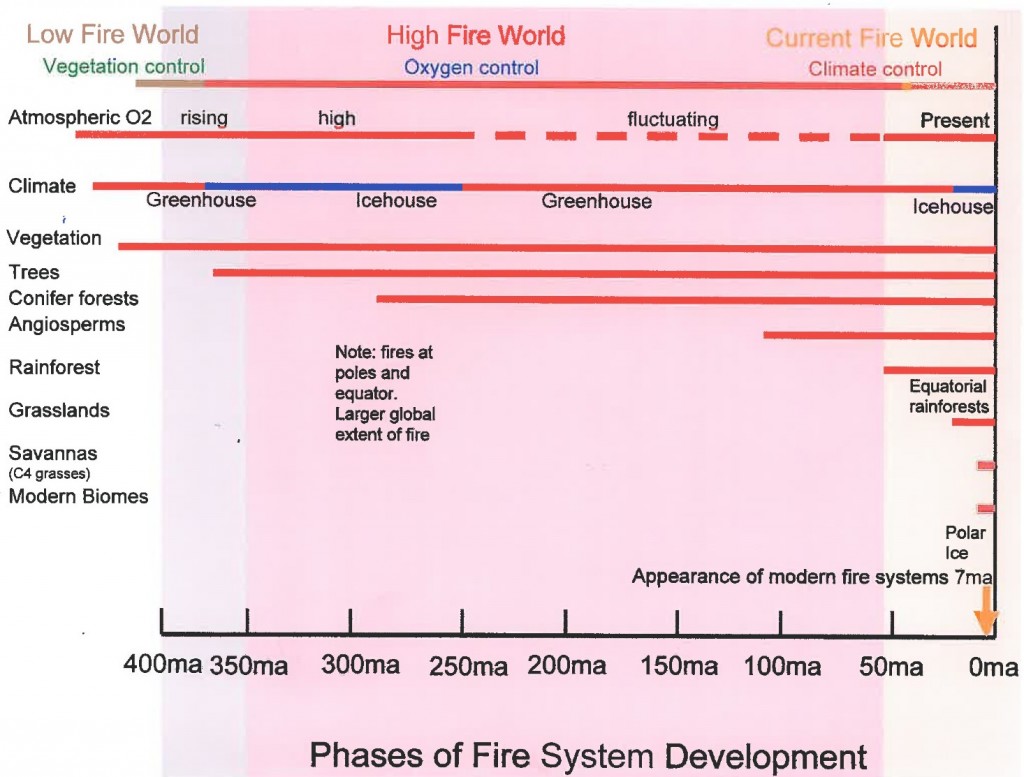
The occurrence of charcoal provides information of the evolution of fire systems (from Scott et al, 2013).
In addition the charcoal provides anatomical data that allow the identification of the plants that were burned. In many cases new plants have been described from fossil charcoal. In addition the charcoal provides anatomical data that allow the identification of the plants that were burned. In many cases new plants have been described from fossil charcoal.
Early fires 3
Obviously there are no wildfires before the evolution of plants on land. However even in the late Silurian and early Devonian (420-400 ma) there are a few records of charcoalified plants showing the characteristic three-dimensional internal anatomy. Despite the spread of plants through the Devonian there are relatively few records of charcoal. It is believed that this may be because of a low oxygen content of the atmosphere at this time. In today’s atmosphere there is 21% oxygen and dry plants can burn well. However, if the oxygen level falls below 17% then fires will fail to spread. And below 15% fires will not start. In contrast, however, experiments have show that above 21% fires may spread more rapidly and above 30% even wet plants may burn.
The mid-late Devonian sees the spread of trees and hence forests (see Episode 4). However, forest fires do not appear to have occurred until the very end of the Devonian and in to the Carboniferous (360-340 ma).
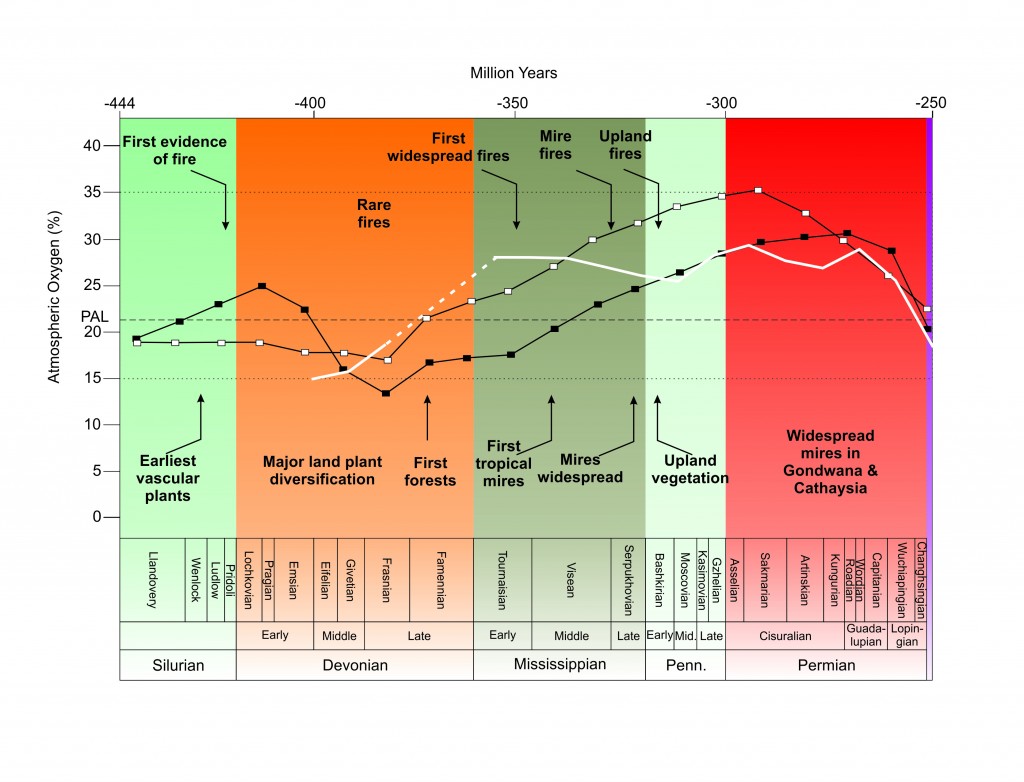
The diversification of fire in the Paleozoic is not only controlled by the evolution of plants but also by the changes in atmospheric oxygen (from Scott et al., 2013 adapted from Scott and Glasspool, 2006).
Rise of fire 4
By the Mississippian (Early Carboniferous, 350-320 ma) we have widespread evidence of fire from widespread and abundant charcoal deposits.
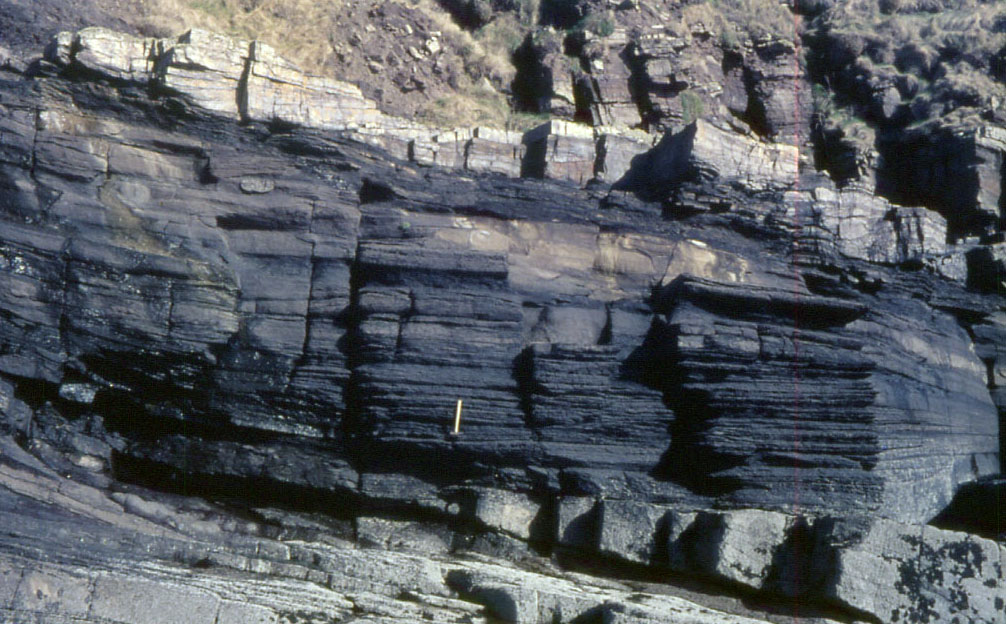
In Donegal, marine and nearshore sediments from the Visean (340 ma) Shalwy Formation contain abundant charcoalfied plants.
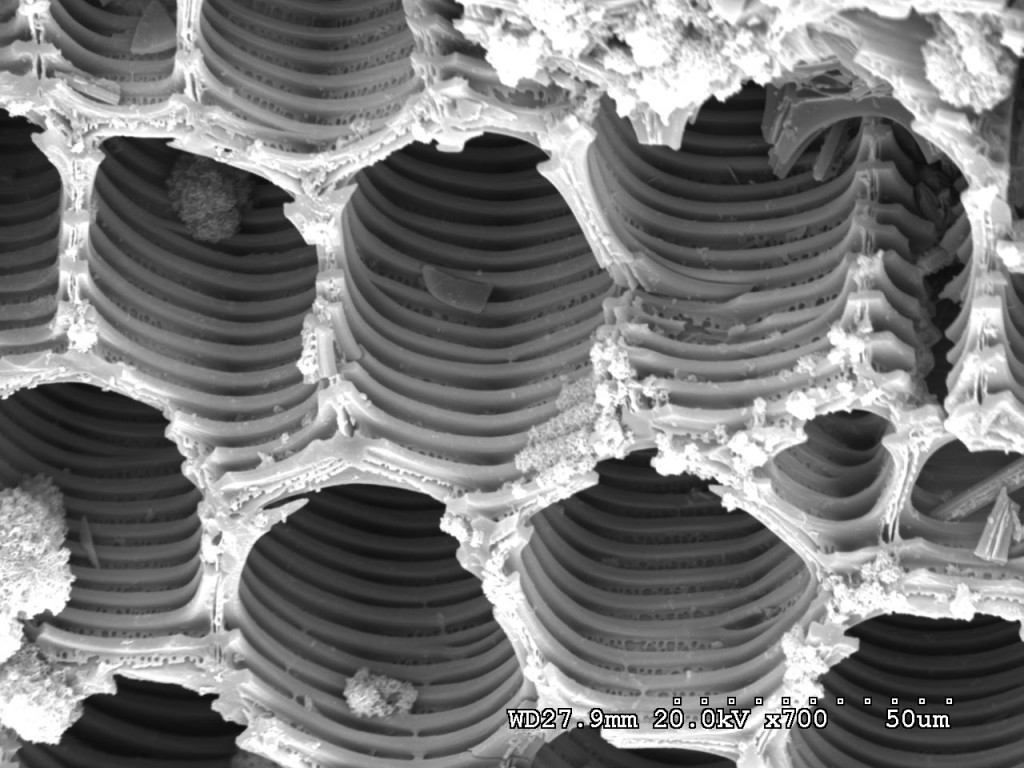
This is the central woody stele. Under this higher magnification distinctive wall thickenings can be seen.
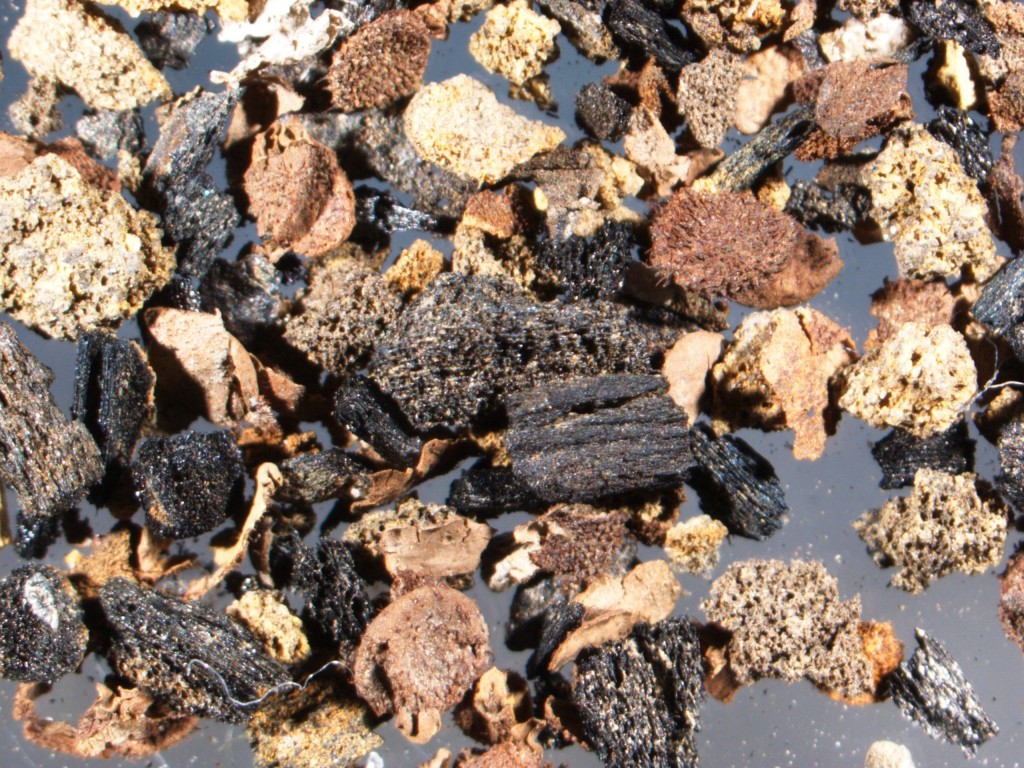
Many sediments from this period will yield charcoal. In this image the brown plants are uncharred and include megaspores. All the black fragments are charcoal and preserve anatomy.
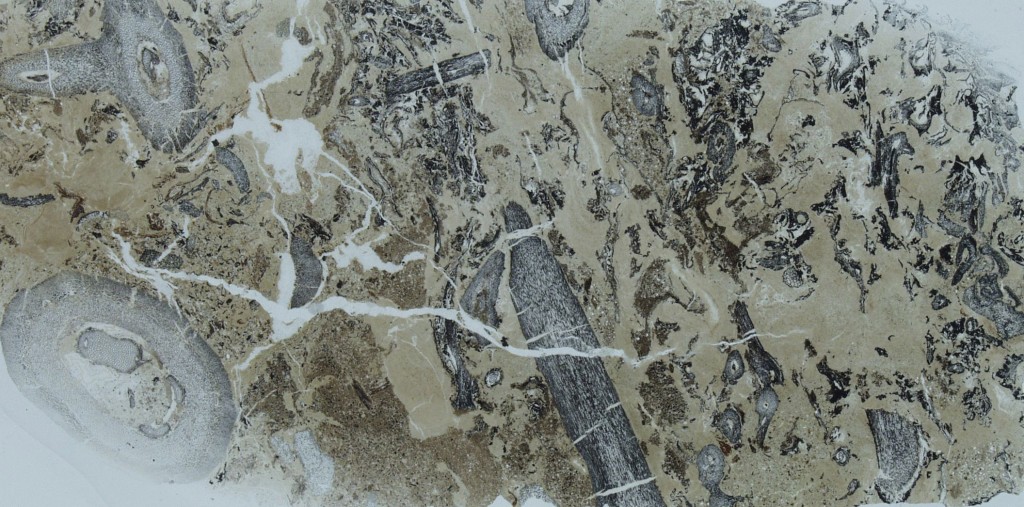
In this section of limestone from Petycur, Fife, also from the Visean (347-331 ma), you can see charcoalified ferns.
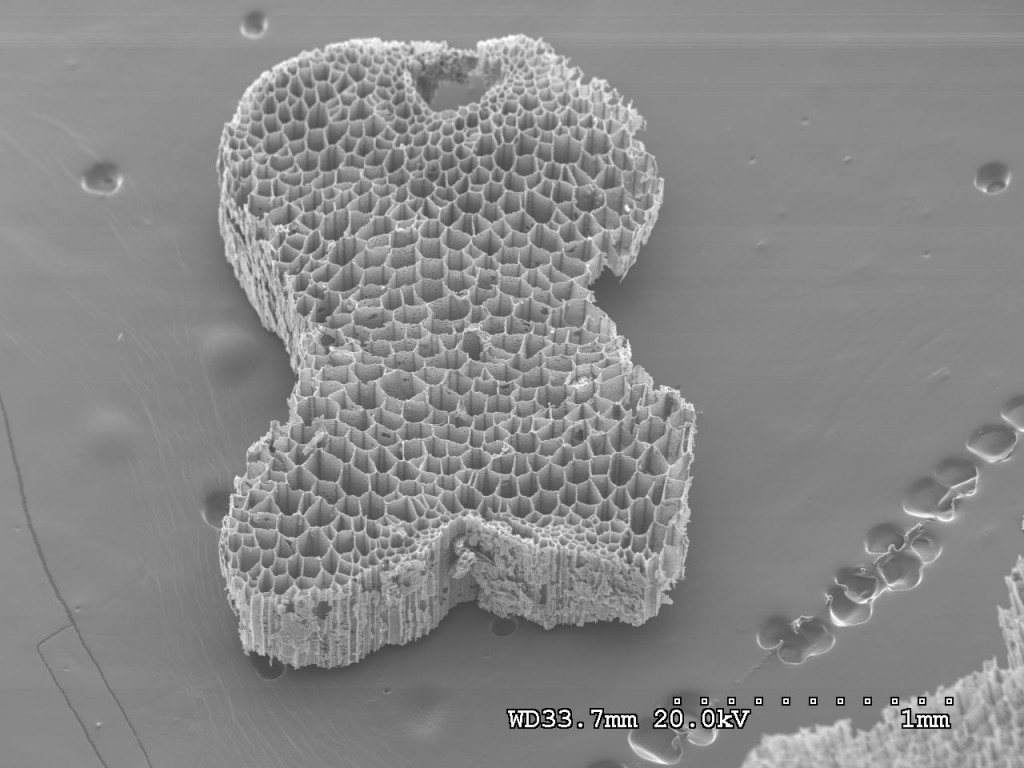
These can also be dissolved from the limestone and examined using the SEM. Here is the stele of a fern petiole…
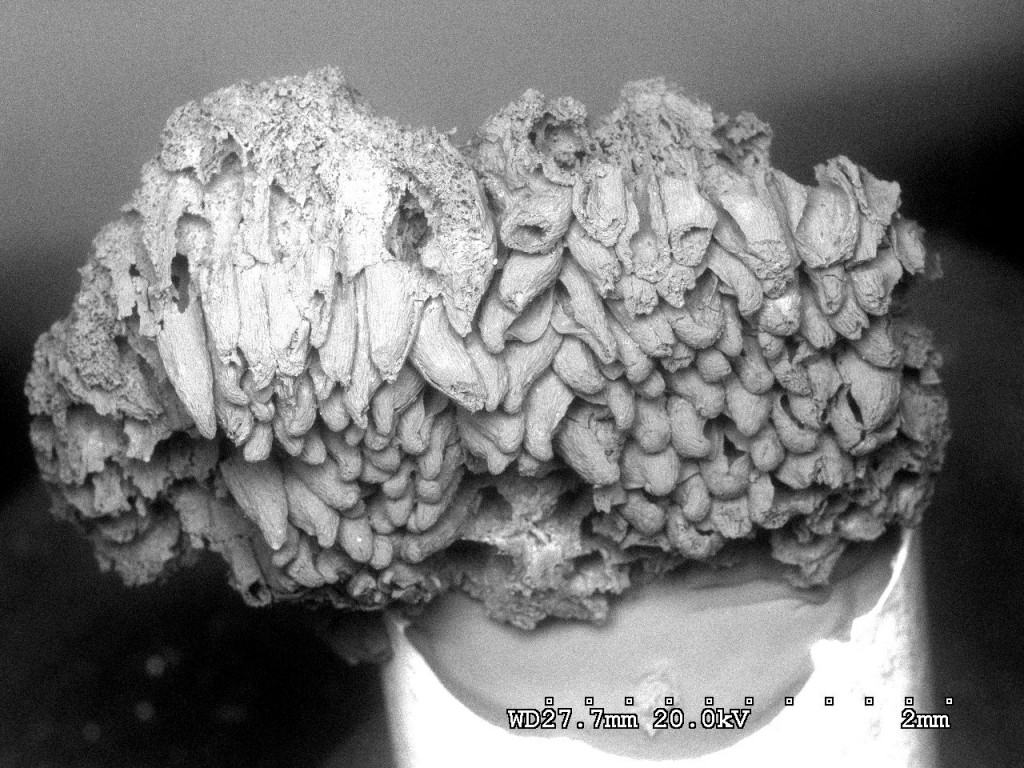
At the nearby locality of Kingswood a wide range of charcoalified pteridospems (see ferns) are found. Here, pollen organs are commonly preserved.
Using synchrotron radiation X-ray tomographic microscopy (SRXTM) it is possible recreate a 3D model of the pollen organ using transverse scans. This was undertaken using the TOMCAT beamline at the Swiss Light Source (http://www.psi.ch/sls/tomcat/) at the Paul Scherrer Institut, Switzerland with the help of Marco Stampanoni and Federica Marone. (see Scott et al., 2009).
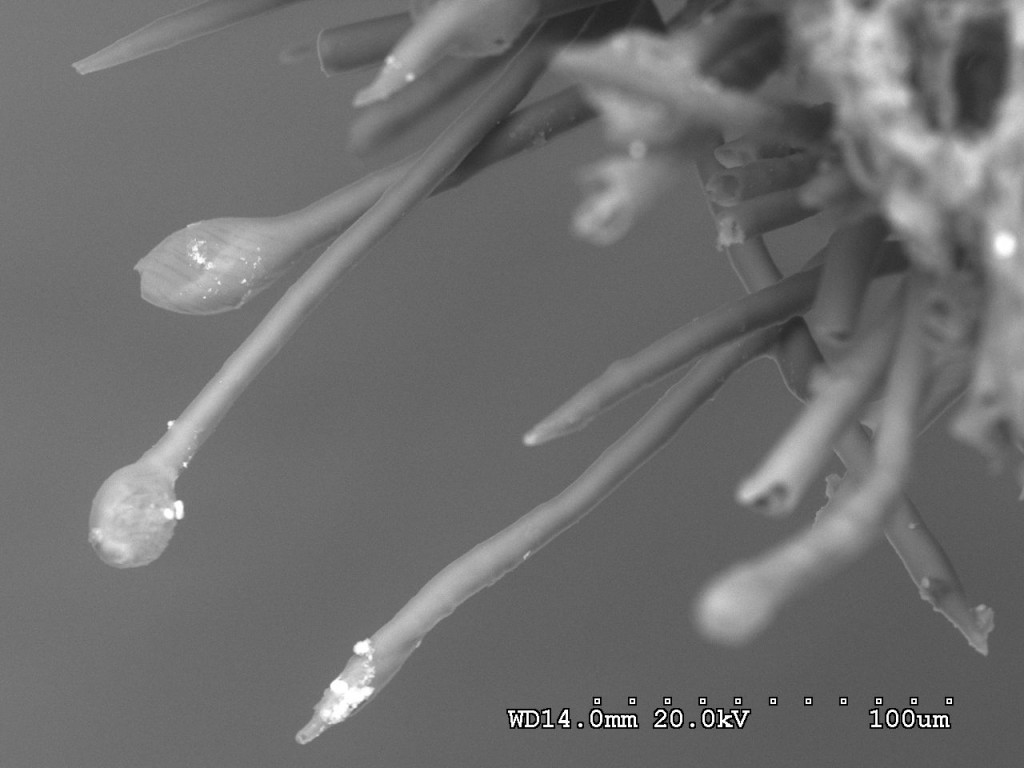
At even higher magnification glandular hairs can also be identified. Note the whole ovule is only around 1mm in length.
SRXTM transverse sections through the ovule.
Digital reconstruction of ovule, colour coded to distinguish different layers.
Carboniferous Cave charcoals 5
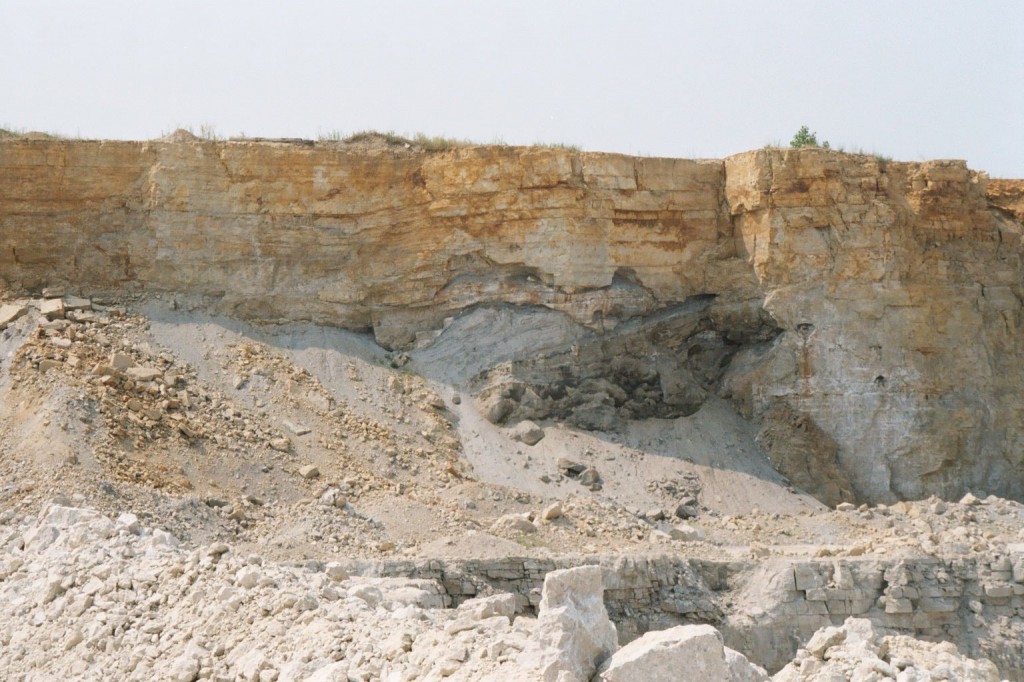
Charcoal may be washed in to unusual depositional settings. Here in the Ordovician limestones (yellow) of northern Illinois, near Chicago there are caves that were formed, and subsequently filled up with sediments (grey/black in situ), during the Pennsylvanian (Late Carboniferous, 310 ma).
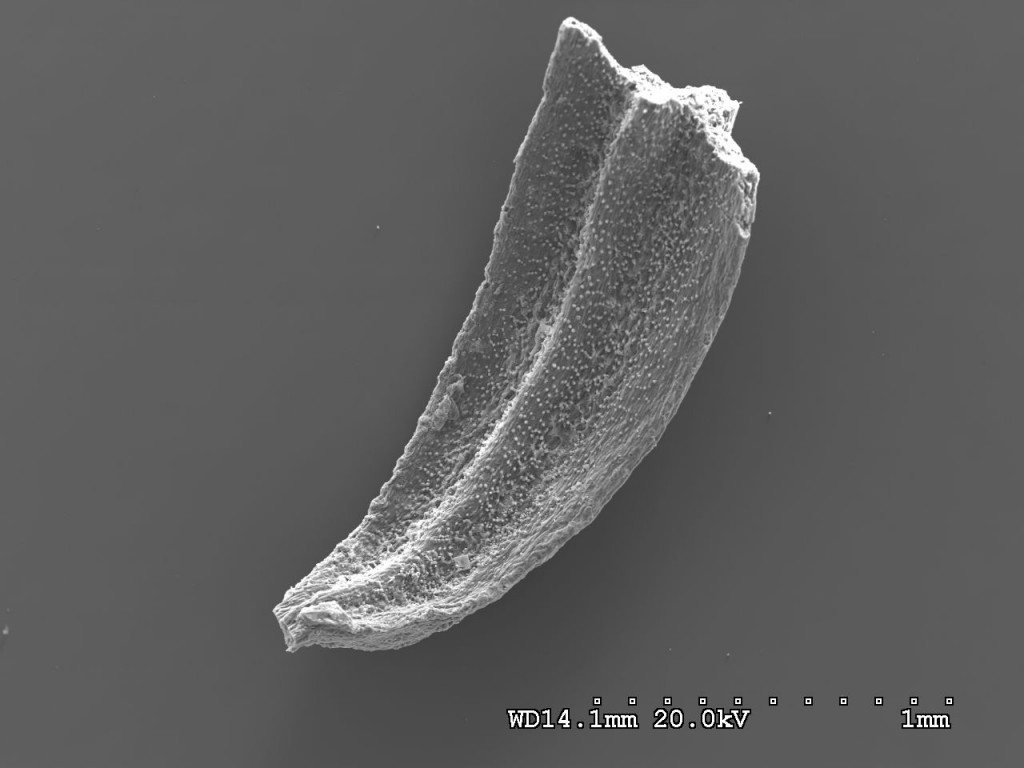
The charcoal resulted from wildfire through upland conifer forests and hence preserves plants that are not normally found in the coal basins to the south. Here is a small conifer needle.
Cretaceous charcoal 6
Just as the late Carboniferous and Permian may be considered as high fire worlds because of elevated atmospheric oxygen so also the Cretaceous. In the early Cretaceous vegetation was dominated by send plants such as conifers, cycads and bennettitalians. However there was a considerable undergrowth of ferns.
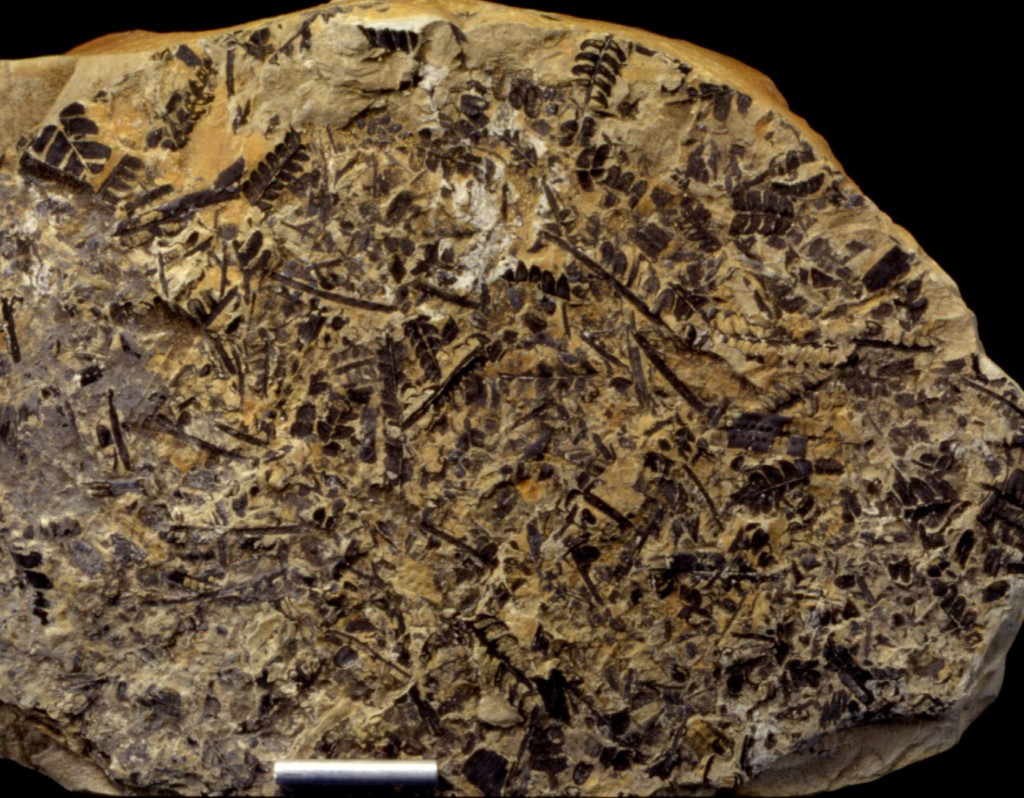
Charcoalified ferns can be found in many localities such as in the rocks of the Wealden Group, Isle of Wight, UK.
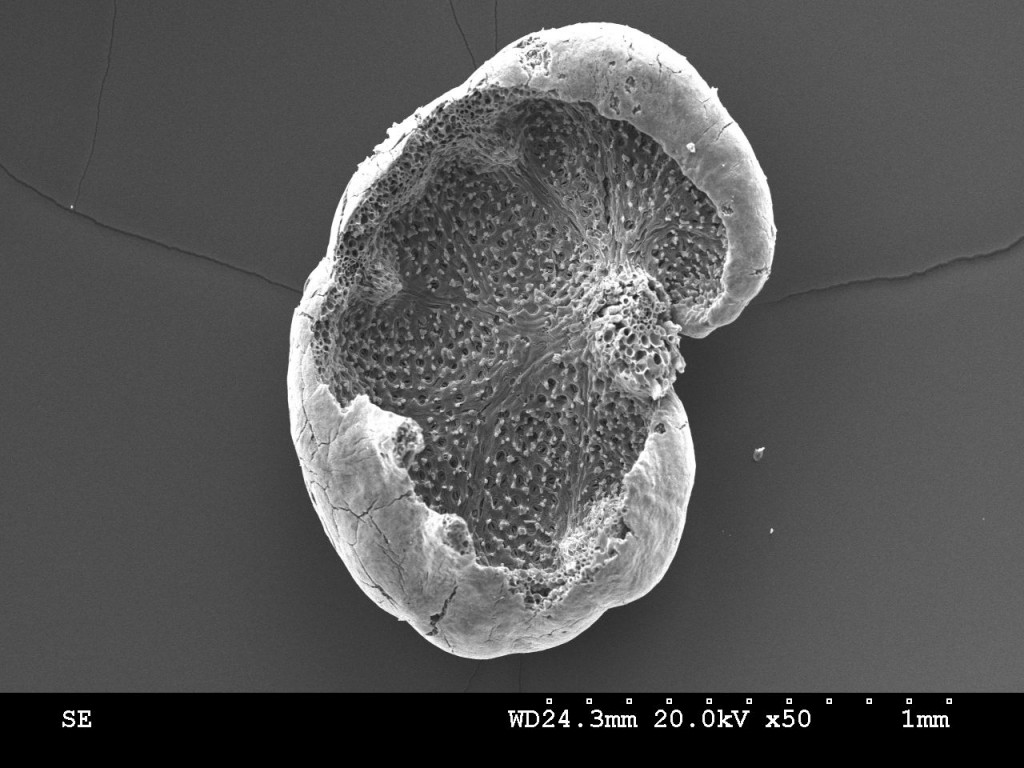
Charcoalified ferns are also found in the Wealden Group over the English Channel in Belgium. This SEM image shows how even the smallest features are preserved.
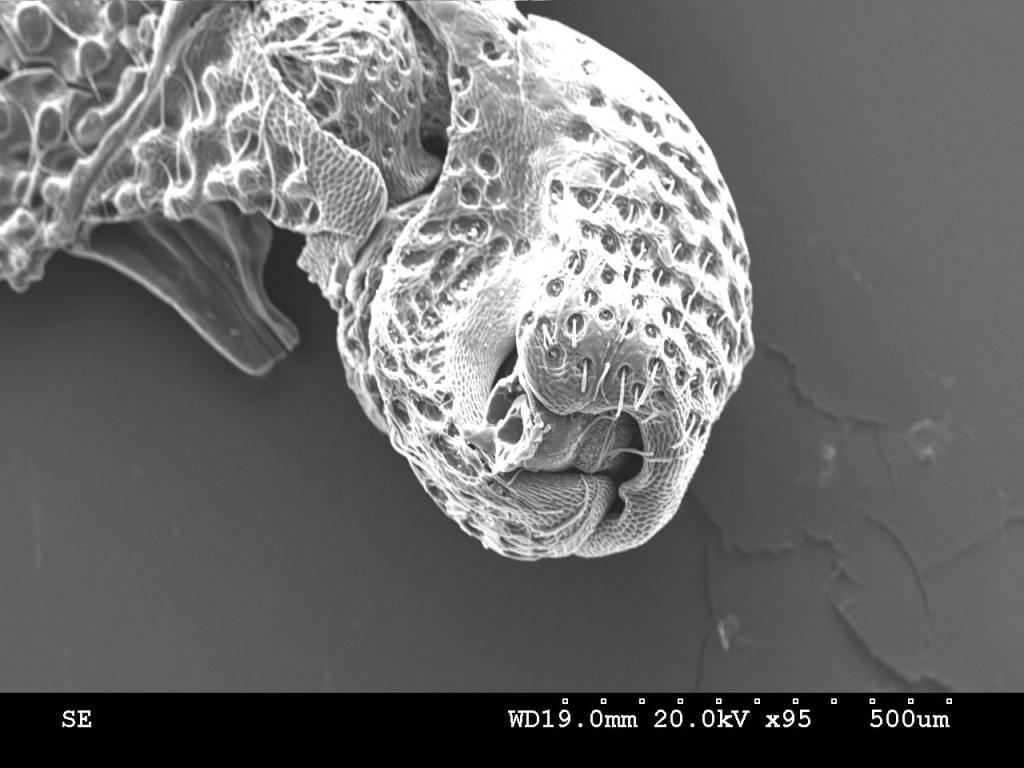
Even charred insects have been found, showing charcoalification can preserve animals as well as plants.
Fires and dinosaurs 7
Fire, therefore, was common during a period when dinosaurs roamed the landscape. This may have had a dramatic effect upon them and even, in some case, may have led to their preservation through flooding following fires and bodies may have been buried by the sediment brought down by the floods.
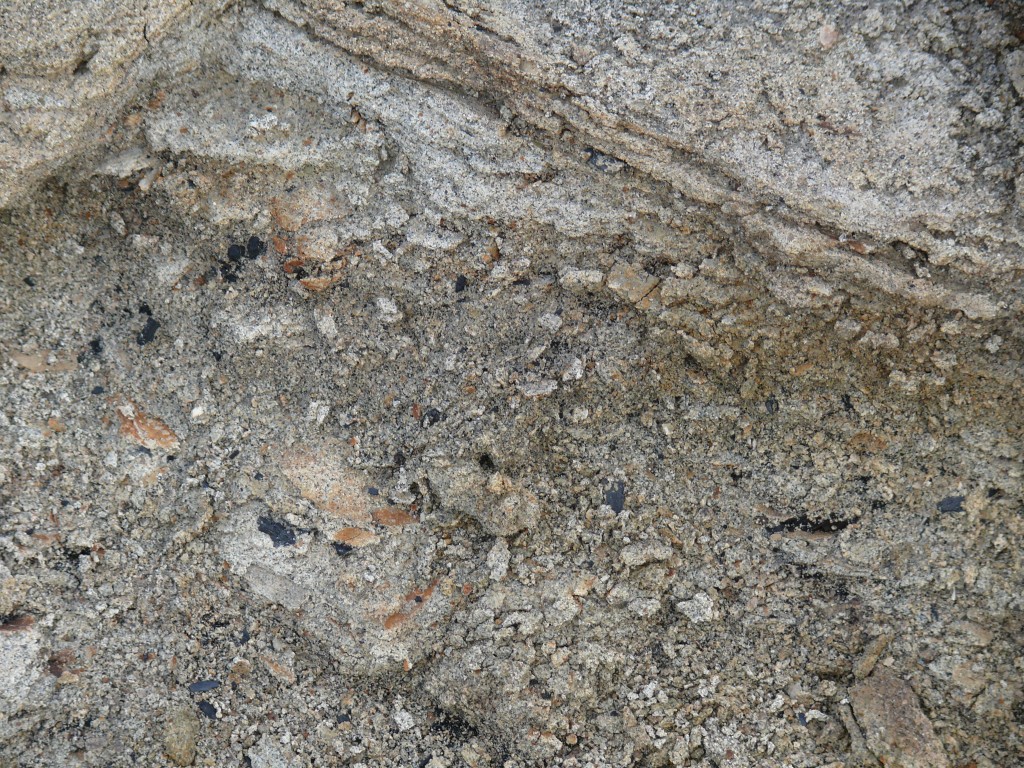
Dinosaur-bearing deposits often yield charcoal as seen in these sandstones from Dinosaur provincial Park in Alberta, Canada.
Fire and flowers 8
Flowering plants are first found in the early Cretaceous (140ma); they were small, weed-like and mainly small-flowered.
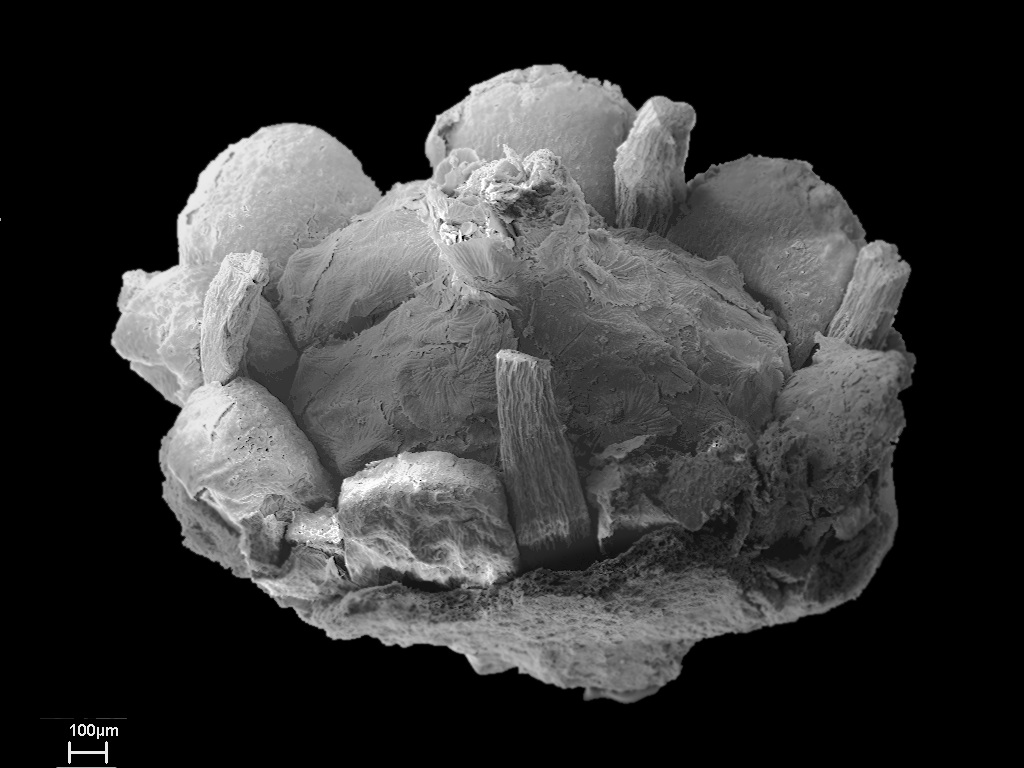
It is through the study of charcoalified flowers under SEM that we have gained an insight into their evolution (photo Field Museum of Natural History, Chicago).
As indicated above the Cretaceous was a high fire world and it has been suggested that the early spread of these weedy plants was in part due to the frequent flowers that allowed these plants to thrive in such disturbed environments. While there is abundant evidence of fires throughout the cretaceous there is little evidence of a global fire at the K/T(K/P) boundary, 65.5ma) as has been claimed by some authors and is a view popular with the media.
Our understanding of fire in the Cenozoic is more sketchy, but the evolution of the grass-fire cycle over the past 7 million years has allowed the development and maintenance of vast swathes of savanna.
Fire and humans 9
Fire, therefore occurs on the Earth long before humans but humans are a keystone species for fire and the relationship between man and fire is complex. You can read about this history by following the link.
The details of charcoalified fossils revealed
References
1. For a more detailed introduction of fire on Earth see:
Scott, A.C., Bowman, D.J.M.S., Bond, W.J., Pyne, S.J. and Alexander M. 2013. Fire on Earth: An Introduction. J. Wiley and Sons. (http://www.rhul.ac.uk/science/fireonearth/home.aspx).
Also:
Bowman, D.M.J.S., Balch, J.K., Artaxo, P., Bond, W.J., Carlson,J.M., Cochrane, M.A., D’Antonio, C.M., DeFries, R.S., Doyle, J.C., Harrison,S..P., Johnston, F.H., Keeley, J.E., Krawchuk, M.A., Kull, C.A., Marston, J.B., Moritz, M.A., Prentice, I.C., Roos. C.I., Scott, A.C., Swetnam, T.W., van der Werf, G. R., and Pyne, S.J. 2009. Fire in the Earth System. Science 324, 481-484.
Graham, R. T. (Ed). 2003. Hayman Fire Case Study. Gen. Tech. Rep. RMRS-GTR-114. Ogden, UT: U.S. Department of Agriculture, Forest Service, Rocky Mountain Research Station. 396 p.
A detailed study of fire and charcoal and the study of charcoal:
Scott, A.C., Cripps, J.A., Nichols, G.J. and Collinson, M.E. 2000. The taphonomy of charcoal following a recent heathland fire and some implications for the Interpretation of fossil charcoal deposits. Palaeogeography, Palaeoclimatology, Palaeoecology 164, 1-31.
Scott, A.C. 2010. Charcoal recognition, taphonomy and uses in palaeoenvironmental analysis. Palaeogeography, Palaeoclimatology, Palaeoecology 291,11-39.
2. For a detailed analysis of modern and fossil charcoal and its significance including sedimentation and preservation see:
Glasspool, I.J. and Scott, A.C. 2013. Identifying past fire events. pp. 179-206 in C. M. Belcher (ed). Fire Phenomena in the Earth System – An Interdisciplinary Approach to Fire Science. J. Wiley and Sons
Nichols, G.J., Cripps, J.A., Collinson, M.E. and Scott, A.C. 2000. Experiments in waterlogging and sedimentology of charcoal: results and implications. Palaeogeography, Palaeoclimatology, Palaeoecology 164, 43-56.
Scott, A.C. 1989. Observations on the nature and origin of fusain. International Journal of Coal Geology 12, 443-475.
Scott, A.C. 2001. Preservation by fire. pp. 277-280. In: Briggs, D.E.G. and Crowther, P.R. (eds). Palaeobiology II. Blackwell Science, Oxford.
Scott, A.C. and Jones,T.P. 1991. Fossil charcoal: a plant fossil record preserved by fire. Geology Today 7, 214-216.
Scott, A.C. and Glasspool, I.J. 2007. Observations and experiments on the origin and formation of inertinite group macerals. International Journal of Coal Geology 70, 53-66.
For a history of fire in deep time see:
Belcher, C.M., Collinson, M.E. and Scott, A.C. 2013. A 450 million year record of fire. pp. 229-249. in C. M. Belcher (ed). Fire Phenomena in the Earth System – An Interdisciplinary Approach to Fire Science. J. Wiley and Sons.
Scott, A.C. 2000. The Pre-Quaternary History of Fire. Palaeogeography, Palaeoclimatology, Palaeoecology 164, 281-329.
Scott, A.C. 2009. Forest Fire in the Fossil Record. pp. 1-37. In: Cerdà, A. and Robichaud, P. (eds). Fire Effects on Soils and Restoration Strategies. Science Publishers Inc. New Hampshire.
3. For an analysis of the earliest fires and the rise of oxygen see:
Glasspool, I.J., Edwards, D., Axe, L., 2004. Charcoal in the Silurian as evidence for the earliest wildfire. Geology 32, 381-383.
Glasspool, I.J., Edwards, D., Axe, L. 2006. Charcoal in the Early Devonian: A wildfire-derived Konservat-Lagerstatte. Review of Palaeobotany and Palynology 142, 131-136.
Glasspool, I.J. and Scott A.C. 2010. Phanerozoic concentrations of atmospheric oxygen reconstructed from sedimentary charcoal. Nature Geoscience 3, 627-630.
4. The rise of fire in the Carboniferous see:
Scott, A.C., Galtier, J., Gostling, N.J., Smith, S.Y., Collinson, M.E., Stampanoni, M., Marone, F., Donoghue, P.C.J., and Bengtson, S. 2009. Scanning Electron Microscopy and Synchrotron Radiation X-Ray Tomographic Microscopy of 330 million year old charcoalified seed fern fertile organs. Microscopy and Microanalysis 15, 166-173.
Scott, A.C. and Jones,T.J. 1994. The nature and influence of fires in Carboniferous ecosystems. Palaeogeography, Palaeoclimatology, Palaeoecology 106, 91-112.
5. Study of Carboinferous cave charcoals see:
Scott, A.C., Kenig, F, Plotnick, R.E., Glasspool, I.J., Chaloner, W.G. and Eble, C.F. 2010. Evidence of multiple late Bashkirian to early Moscovian (Pennsylvanian) fire events preserved in contemporaneous cave fills. Palaeogeography, Palaeoclimatology, Palaeoecology 291, 72-84.
6. For an analysis of Cretaceous fires and their impact see:
Brown,S.A.E., Scott, A.C., Glasspool, I.J. and Collinson, M.E. 2012. Cretaceous wildfires and their impact on the Earth system. Cretaceous Research 36,162-190.
Belcher, C.M., 2009. Reigniting the Cretaceous-Palaeogene firestorm debate. Geology 37, 1147–1148.
7. An analysis of fire and dinosaurs see:
Brown, S.A.E., Collinson, M.E. and Scott, A.C. 2013. Did fire play a role in formation of dinosaur-rich deposits? An example from the Late Cretaceous of Canada. Palaeobiodiversity and Palaeoenvironments. 93, 317-326. Doi: 10.1007/s12549-013-123-y
8. Fire and flowers see:
Bond, W.J. and Scott, A.C. 2010. Fire and the spread of flowering plants in the Cretaceous. New Phytologist 118, 1137-1150.
Friis, E.M., Pedersen, K.R., Crane, P.R., 2006. Cretaceous angiosperm flowers: innovation and evolution in plant reproduction. Palaeogeography, Palaeoclimatology, Palaeoecology 232, 251–293.
And fire post Cretaceous see:
Collinson, M.E., Steart, D., Scott, A.C., Glasspool, I.J. and Hooker, J.J. 2007. Fire and episodic runoff and deposition at the Paleocene-Eocene boundary. Journal of the Geological Society, London 164, 87-97.
9. Fire and humans see:
Scott, A.C., Bowman, D.J.M.S., Bond, W.J., Pyne, S.J. and Alexander M. 2013. Fire on Earth: An Introduction. J. Wiley and Sons. (http://www.rhul.ac.uk/science/fireonearth/home.aspx).
D’Antonio, C.M., DeFries, R., Johnston, F.H. Keeley, J.E., Krawchuk, M.A., Kull, C.A., Mack, M., Moritz, M.A., Pyne, S.J., Roos, C.I., Scott, A.C., Sodhi, N.S., Swetnam, T.W., 2011. The human dimension of fire regimes on Earth. Journal of Biogeography 38, 2223-2236.

